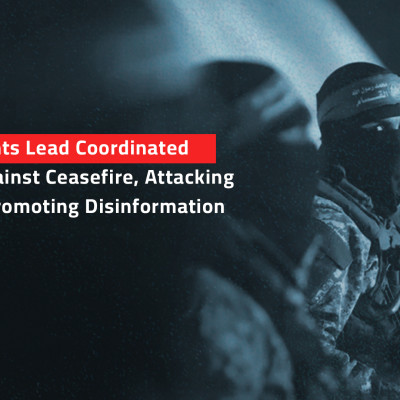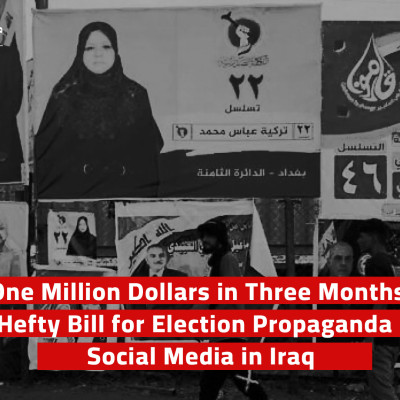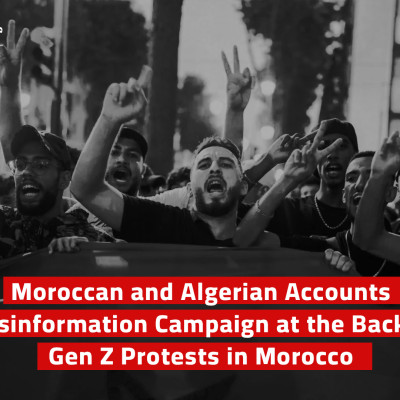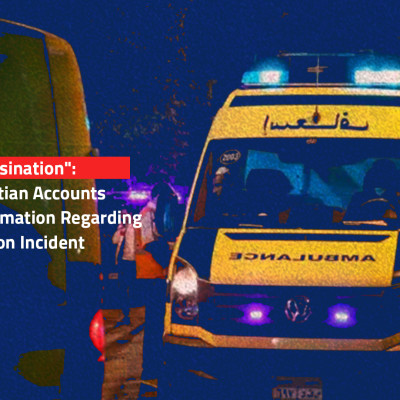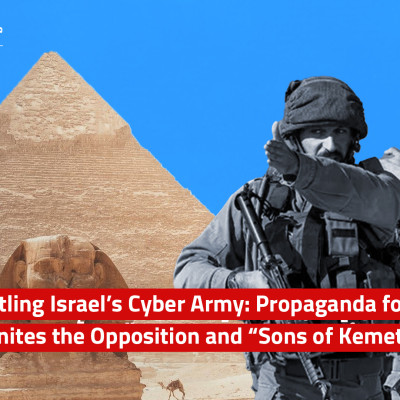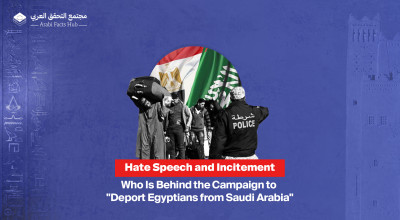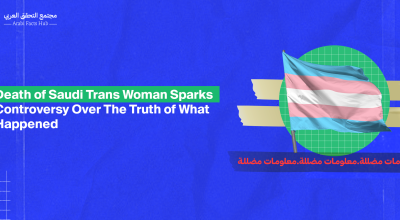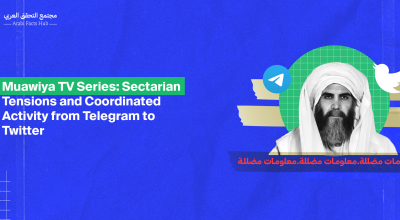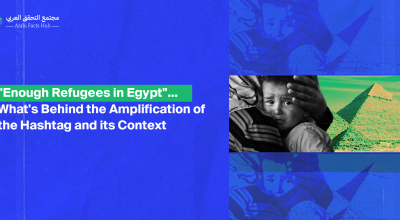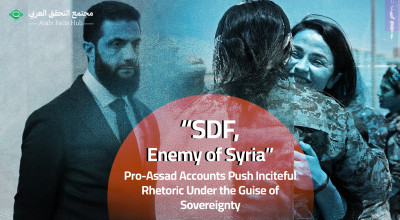Arabi Facts Hub Uncovers the Role of Fake and Commercial Accounts in Saudi and Iranian Campaigns Regarding Nasrallah
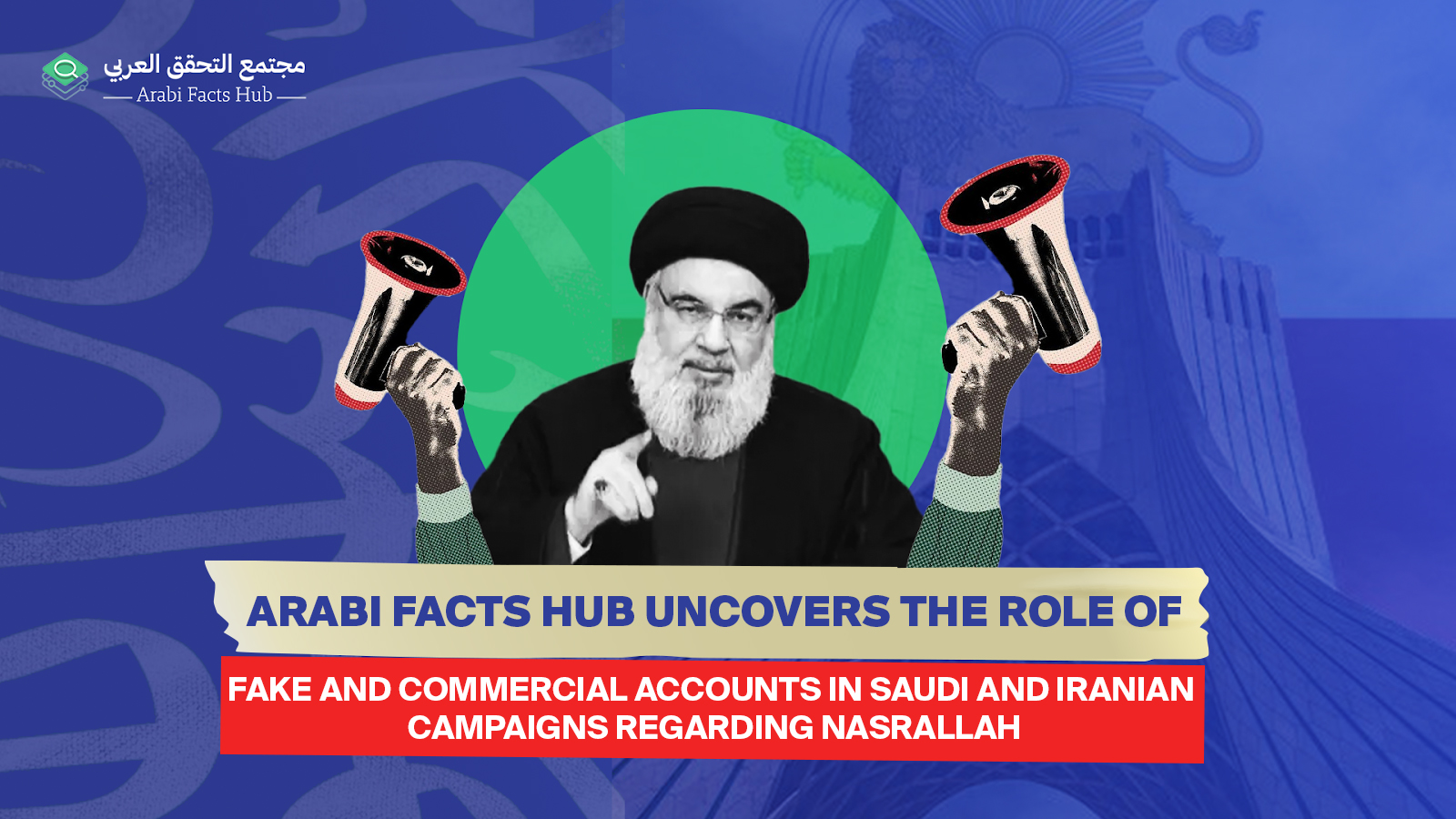
On February 2, 2025, Naim Qassem, the current Secretary-General of Lebanese Hezbollah, announced that the funeral ceremony for his predecessor, Hassan Nasrallah, would take place on the 23rd of the same month. Nasrallah was assassinated in an Israeli airstrike on Beirut's southern suburb. Following the announcement, a coordinated digital campaign was launched on X under the hashtag #أنا_على_العهد (I Am Still Faithful).
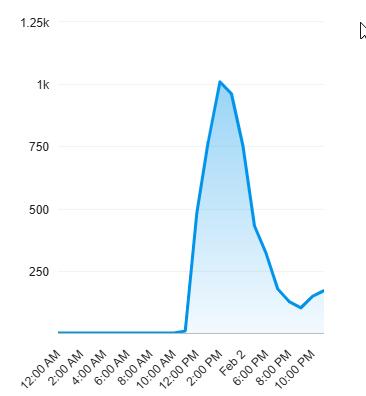
Campaign starts on X, February 2, 2025, at 12:00 PM (Lebanon time)
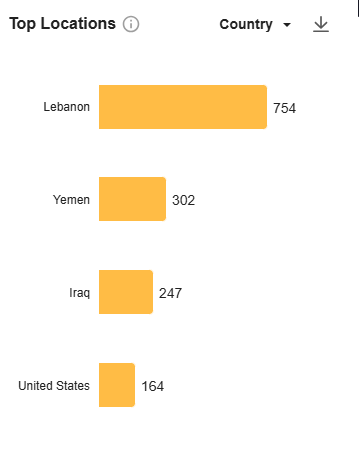
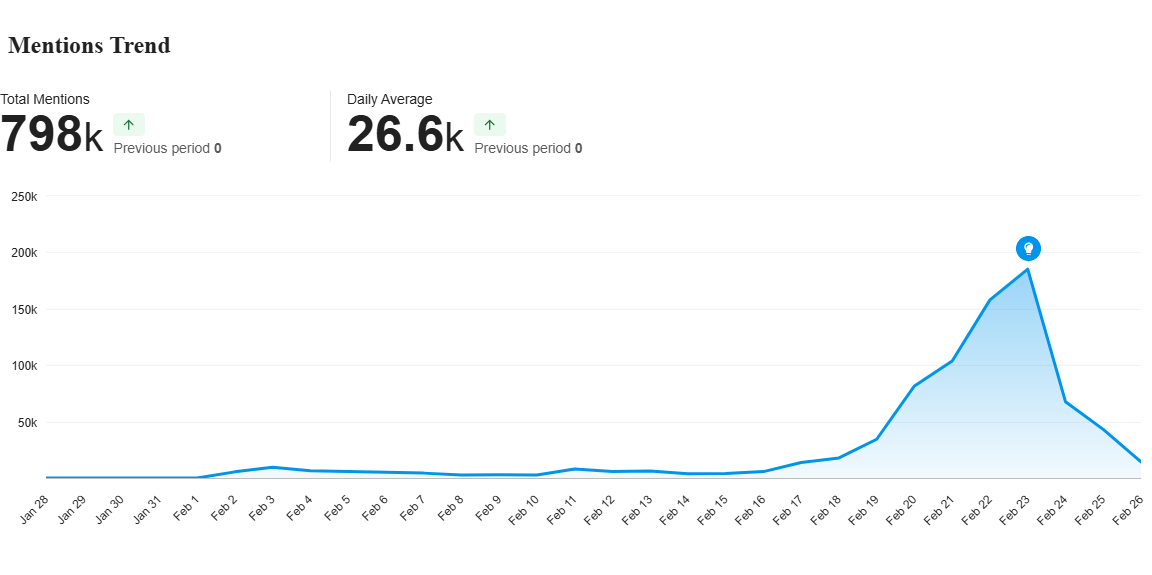
Posting under this hashtag began on February 2 but peaked on February 23, the day of the funeral of former Secretary-General Hashem Safi Al Din and his predecessor Hassan Nasrallah. According to twitter-trending.com, it was the most trending hashtag in Lebanon throughout February.
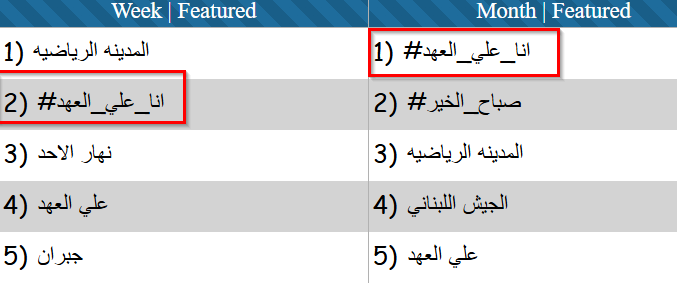
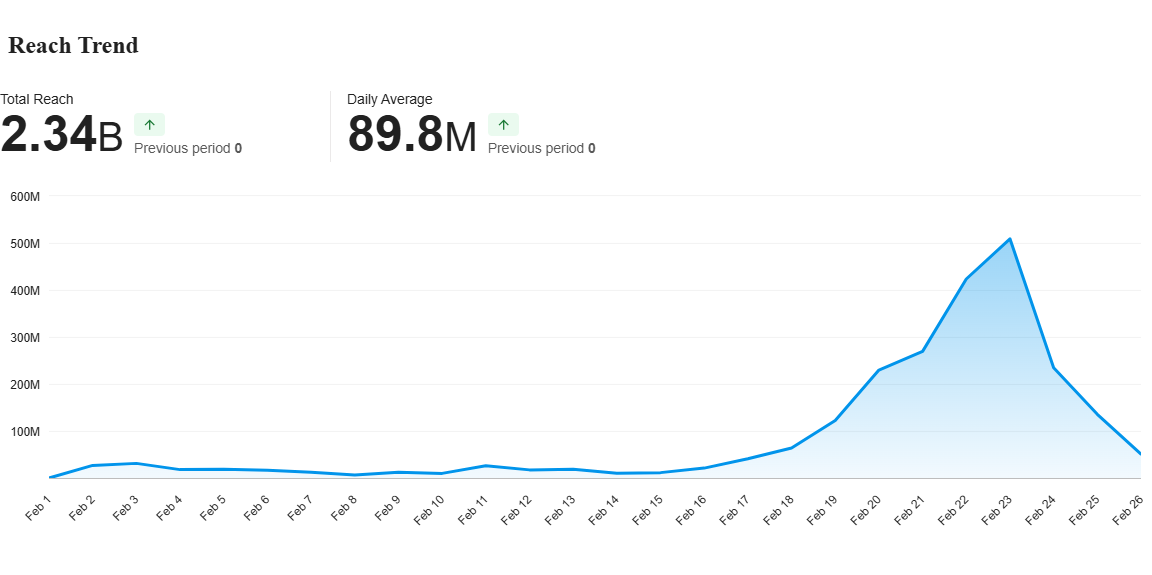
Meltwater reveals the scale of this digital campaign. The content under this hashtag reached over two billion impressions and had an average daily reach of nearly 90 million. This indicates a highly coordinated and intensive digital campaign that significantly amplified the reach of posts under the hashtag, which was connected to 30 others.
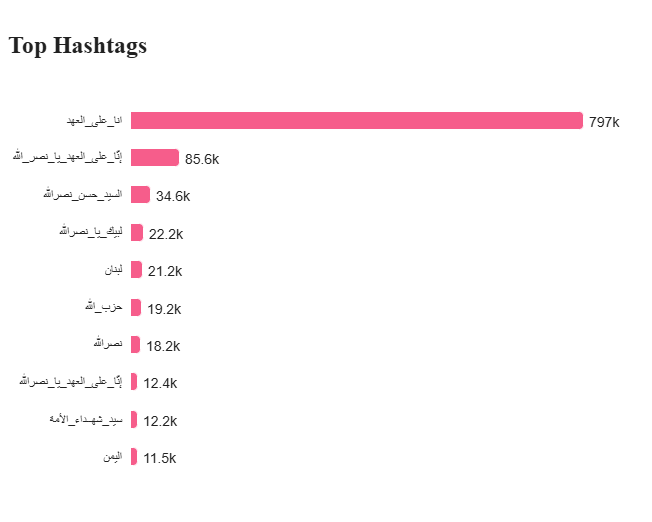
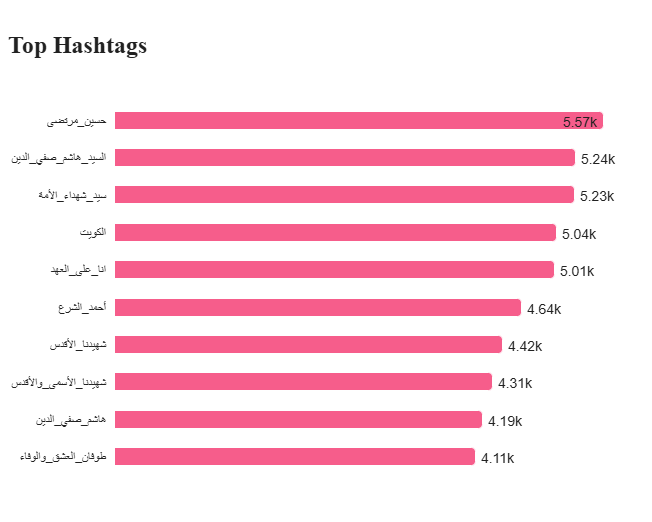
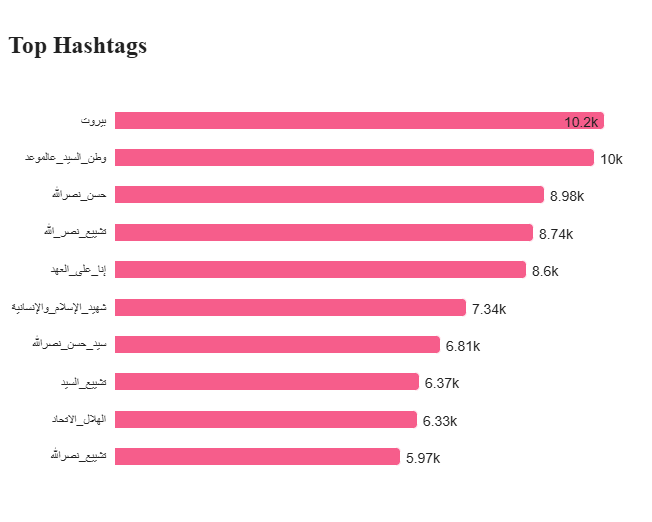
These hashtags and their widespread use were reflected in the most common keywords, resembling digital funeral chants or a massive online procession that originated in Lebanon.
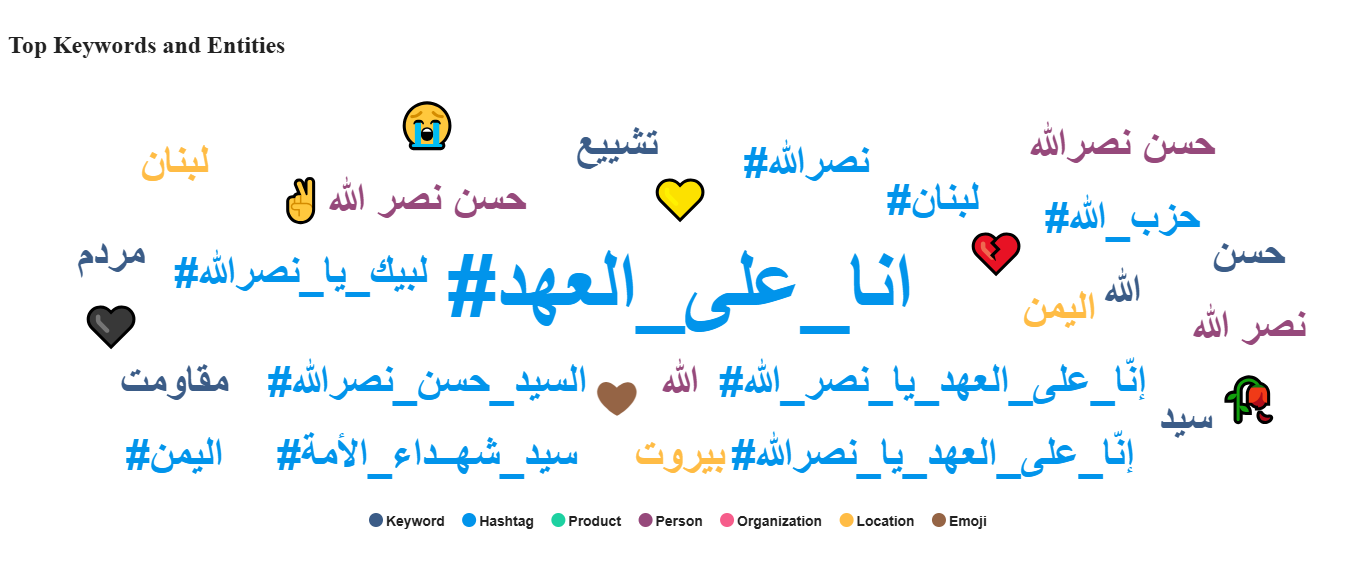
A review of the countries where the most active accounts in posting under the hashtag are located reveals that they are geographically distant from Lebanon. While the campaign began in Lebanon, the majority of interactions—approximately 70,000—came from Iran, followed by Yemen, Lebanon, and Iraq.
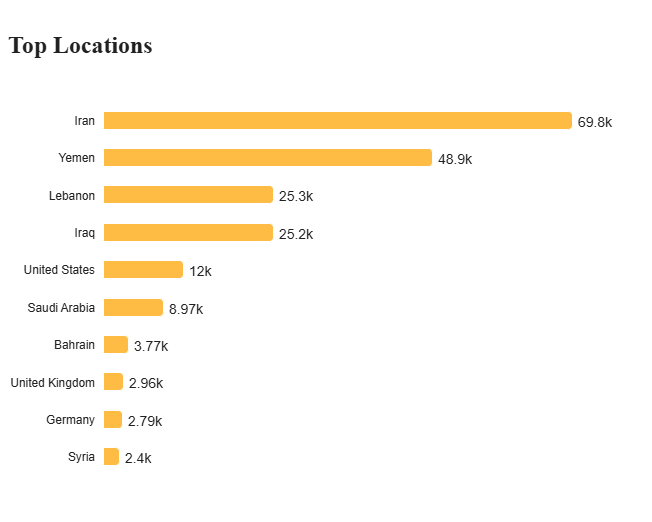
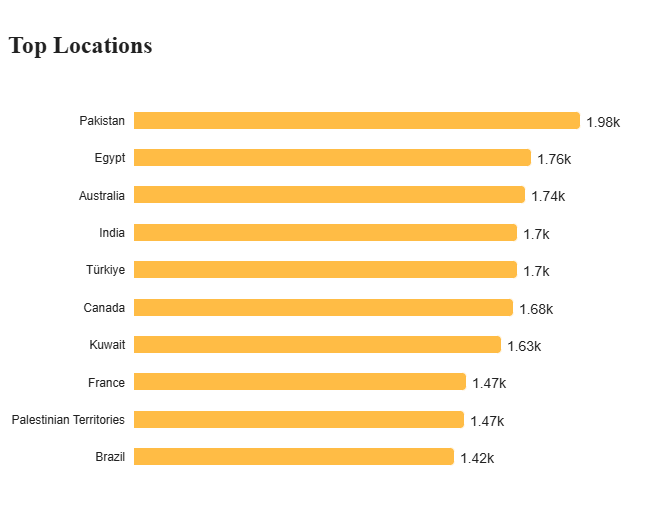
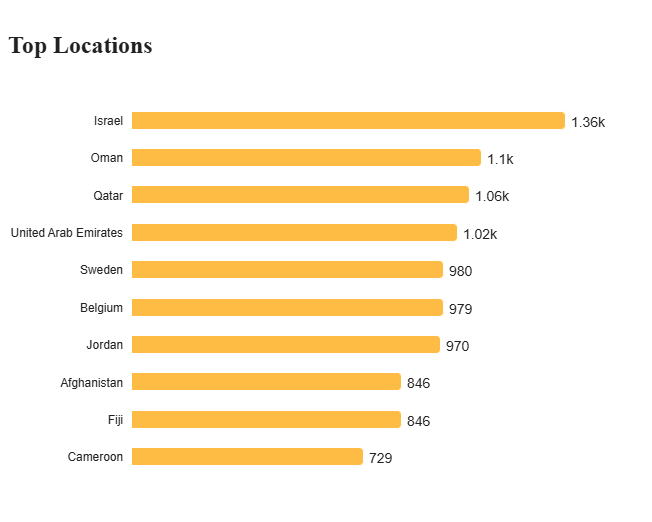
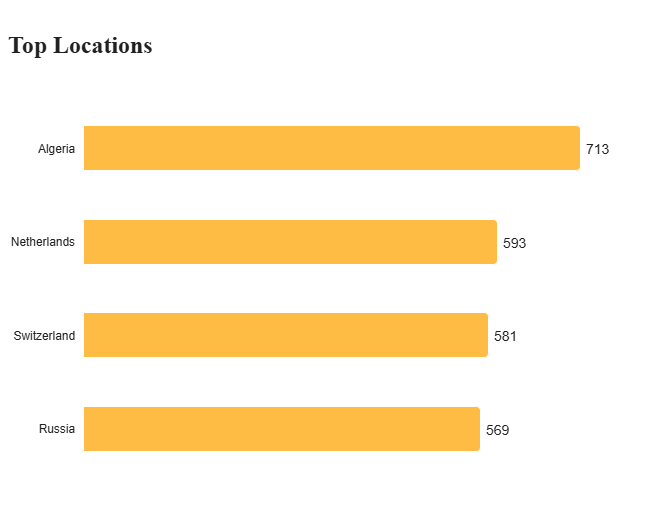
The dominance of Iranian interaction was clearly reflected in the most commonly used words expressing both positive and negative sentiments throughout the campaign. Persian terms appeared prominently in the interactions of many participating accounts, highlighting Iran's role in shaping the digital discourse.
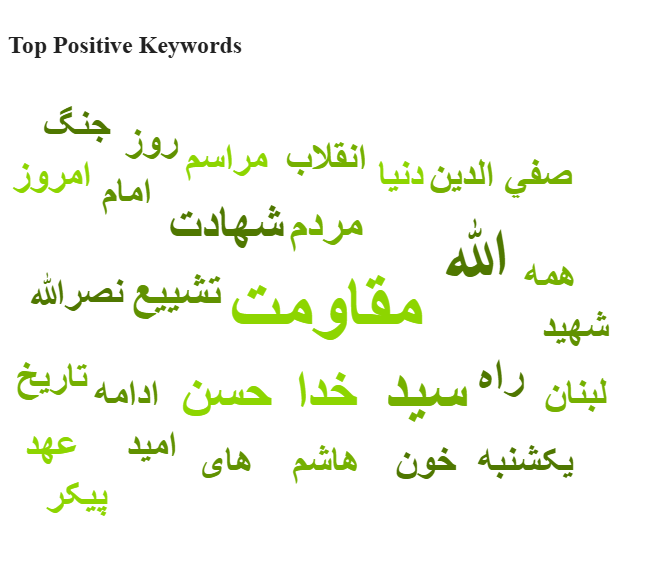
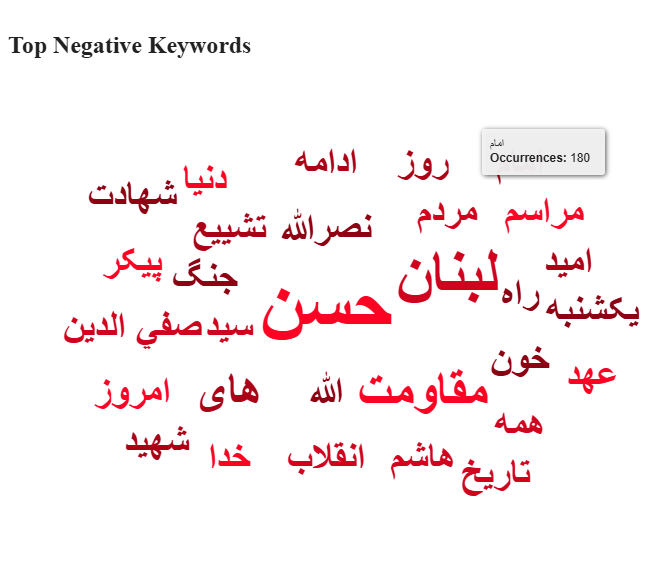
How Did We Confirm That This Campaign Was Electronically Amplified?
Analyzing the spread of the hashtag #انا_على_العهد (I Am Still True to the Pledge) on X revealed high numbers, but it also showed a rapid and unexpected surge in the hashtag and associated hashtags within just 20 days. This unusual growth pattern raised questions about the nature of the intense digital activity surrounding the campaign.

A deeper analysis of the data provided a logical explanation for the sudden spike in interactions, reach, and hashtag spread. The figures revealed that out of around 800,000 interactions during February, 500,000 were shares, accounting for more than half of the total interactions. In contrast, the number of replies was around 200,000, and original posts did not exceed 100,000. This distribution suggests that the campaign primarily relied on resharing to boost its reach, rather than creating new content, indicating the likely presence of paid digital amplification.
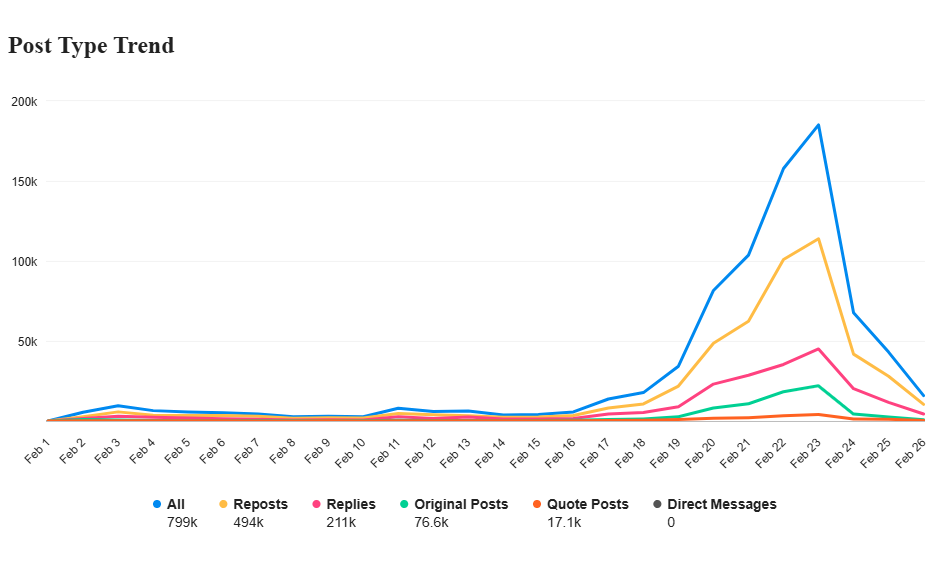
In numerical terms, resharing accounted for approximately 62% of total interactions with the campaign, while replies made up around 26%. Original posts represented just 9.6% of total interactions, reflecting a deliberate amplification of the hashtag's content.
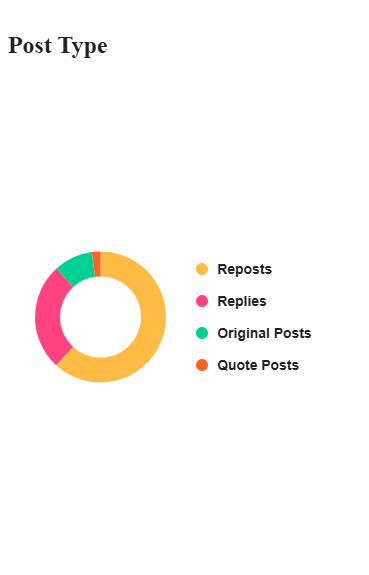
To understand the amplification mechanism, we analyzed the most interactive accounts with the campaign. In terms of prominence, after the account of American activist Jackson Hinkle and the account of the Al Mayadeen, a platform affiliated with Hezbollah, three commercial accounts followed. Their interactions were not related to the hashtag content but focused solely on commercial content, indicating that these accounts were used to boost the hashtag's reach.
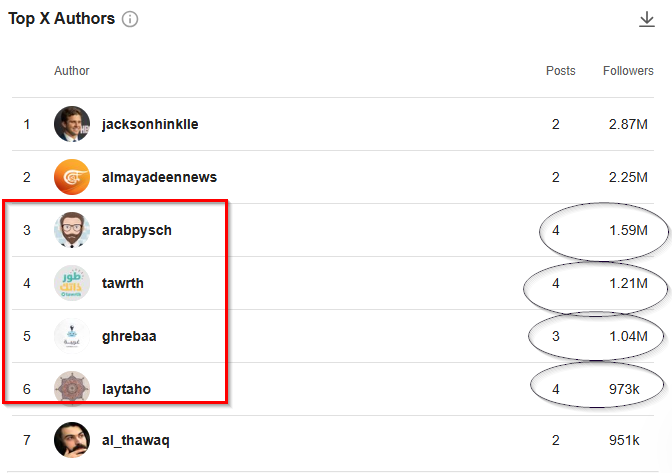
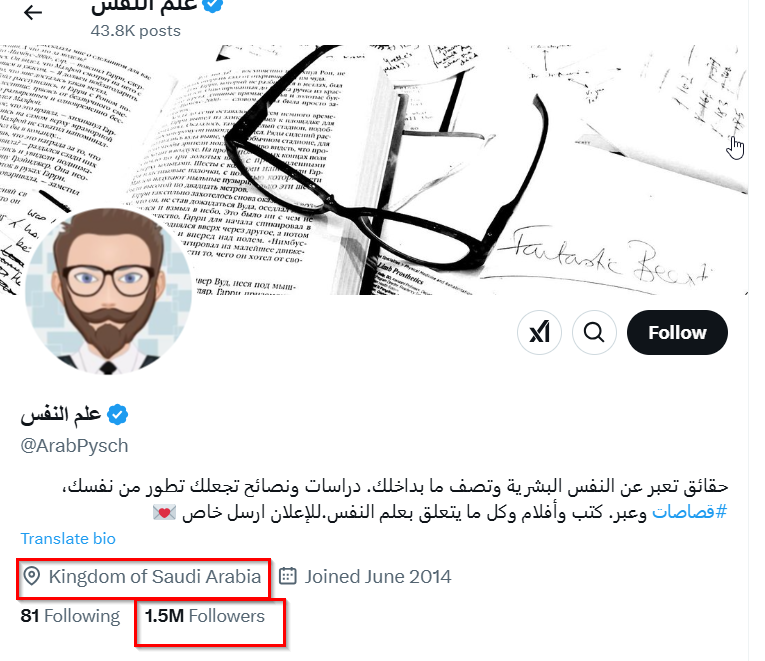
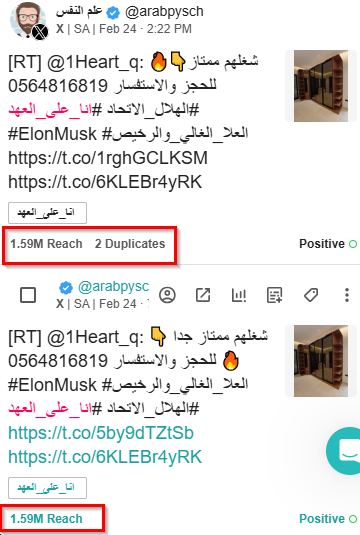
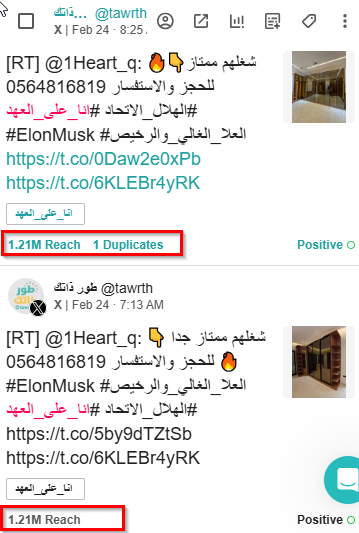
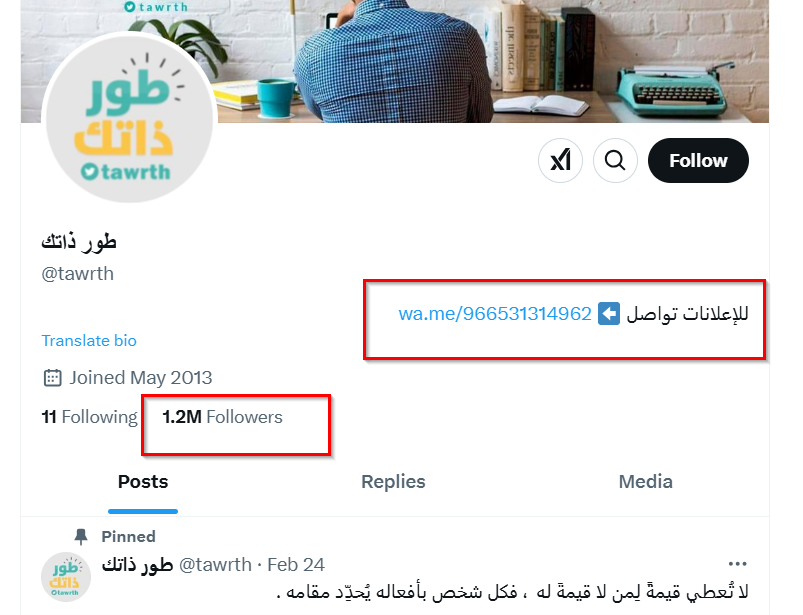
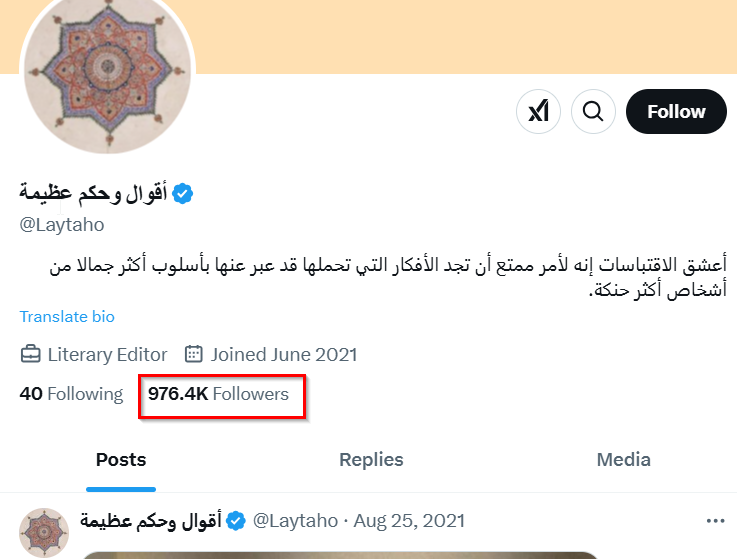
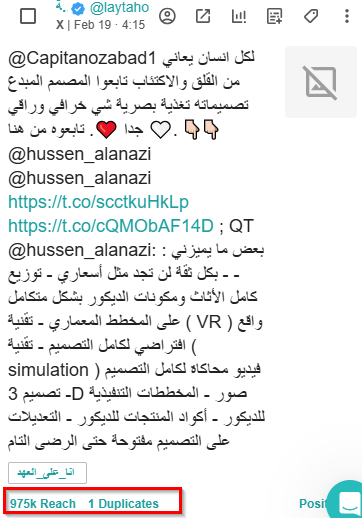
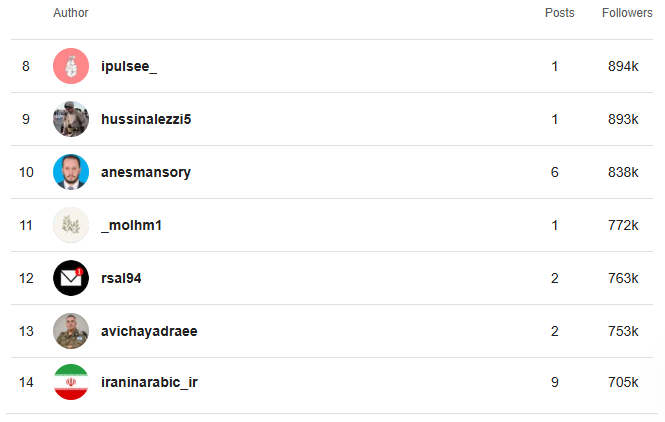
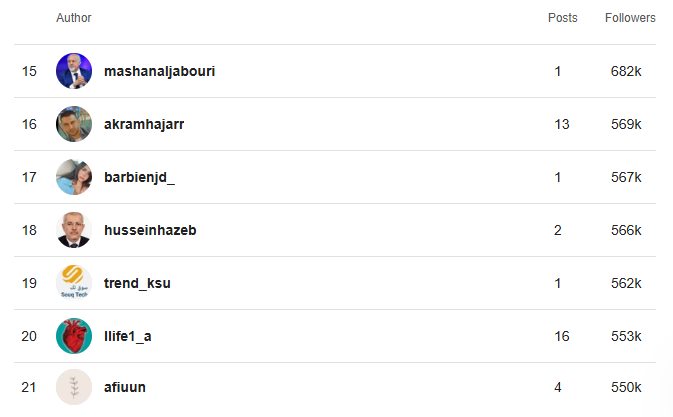
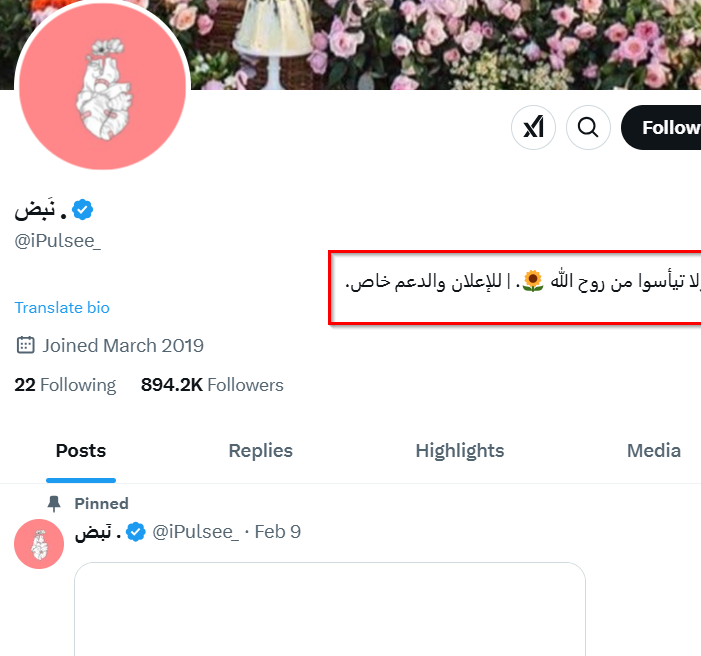
Analysis of the accounts participating in the campaign revealed that only 0.2% of the accounts involved were verified.
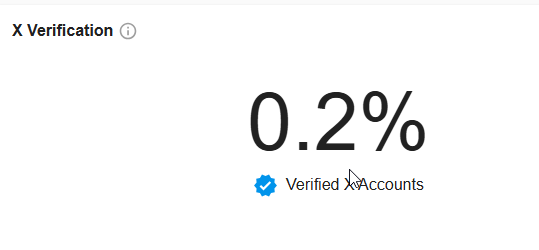
While Iran had the highest number of accounts interacting with the campaign, followed by Saudi Arabia, Yemen, Lebanon, and Iraq, the question arises: Given the ongoing hostility between the Saudi government and Nasrallah, can it be said that Saudi accounts genuinely participated in his mourning campaign?
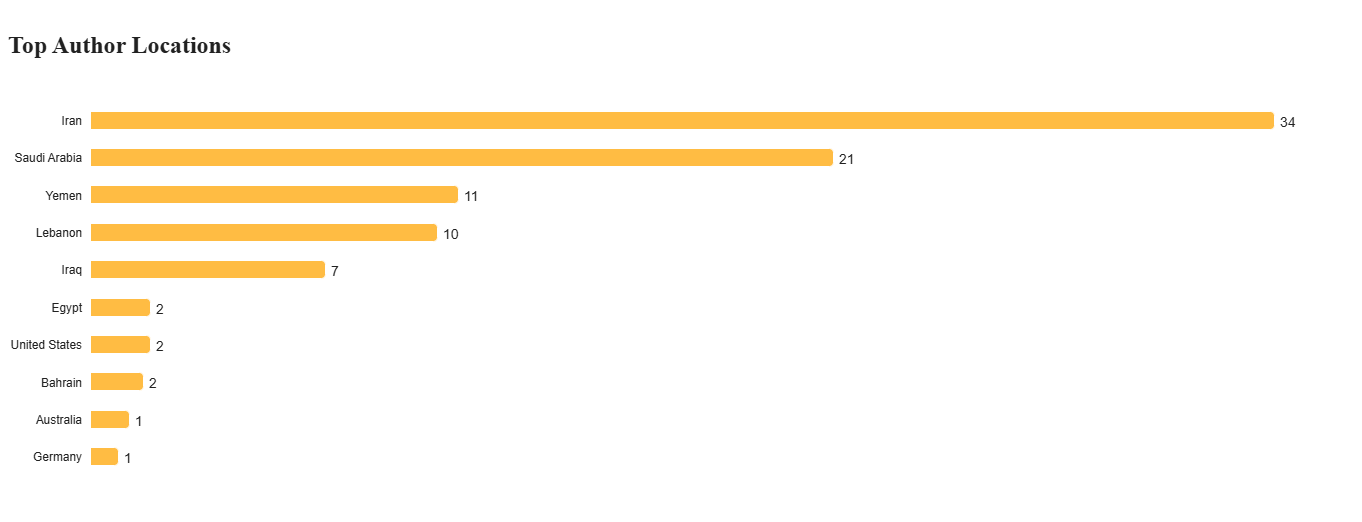
Analysis of the commercial accounts specializing in advertising and participation in the campaign reveals that these accounts identified themselves on X as being based in Saudi Arabia, placing them among the most interactive accounts with the campaign. While the campaign's widespread reach relied heavily on these accounts with large follower bases, it primarily originated from accounts interacting within Iran. This suggests a well-organized digital mobilization campaign, with its base in Iran, extending through a path that promotes Hezbollah's narrative regarding the killing of its members in Israeli airstrikes.
Commercial Advertisers at the Forefront of the Funeral Procession
A deeper look into this digital campaign revealed that accounts from within Iran—being the most numerous—were its primary drivers. Meanwhile, the accounts responsible for amplifying and spreading the hashtag #أنا_على_العهد (I Am Still Faithful) were divided into three main categories.
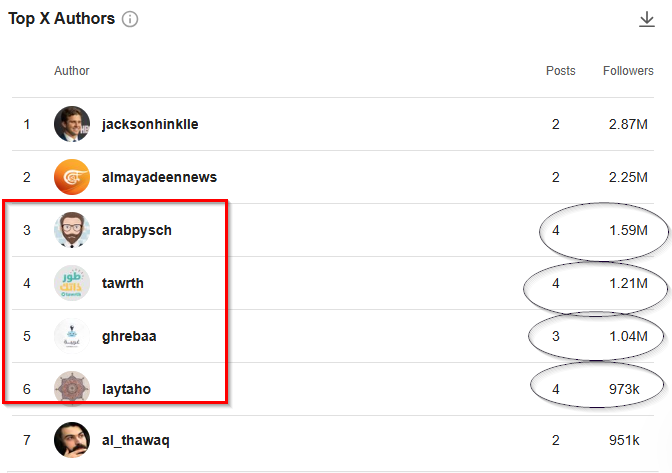
The first category consisted of commercial accounts, which had no political affiliation but focused on advertising and paid promotions. Their primary content included religious prayers and supplications, as well as reposting quotes under themes like "Wisdom, Proverbs, and Teachings."
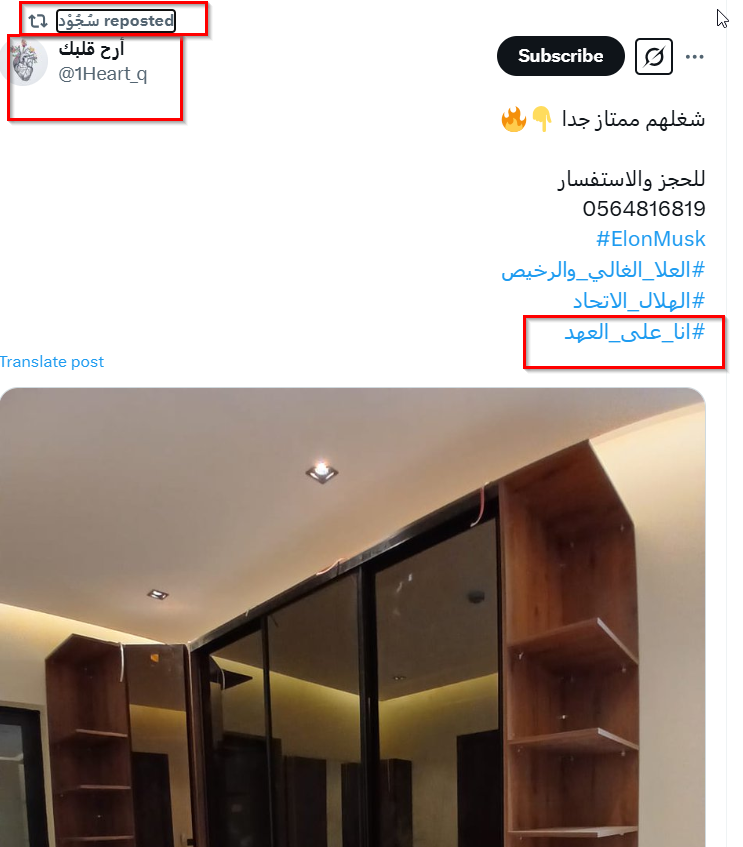
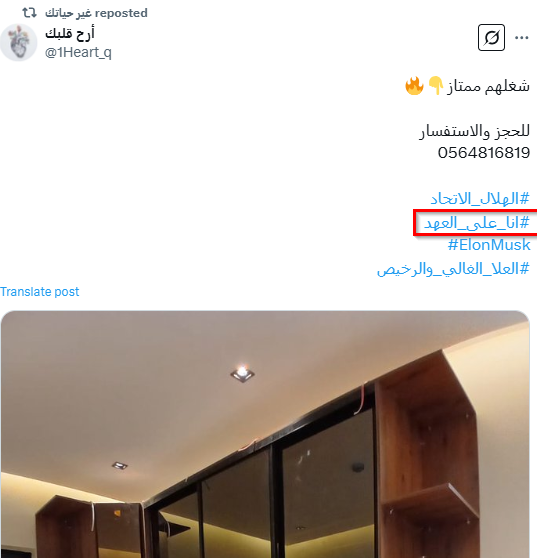
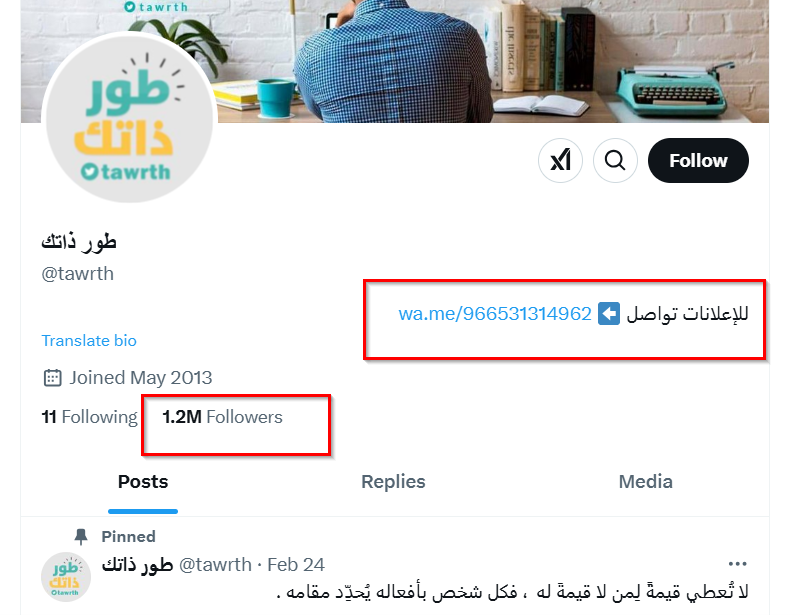
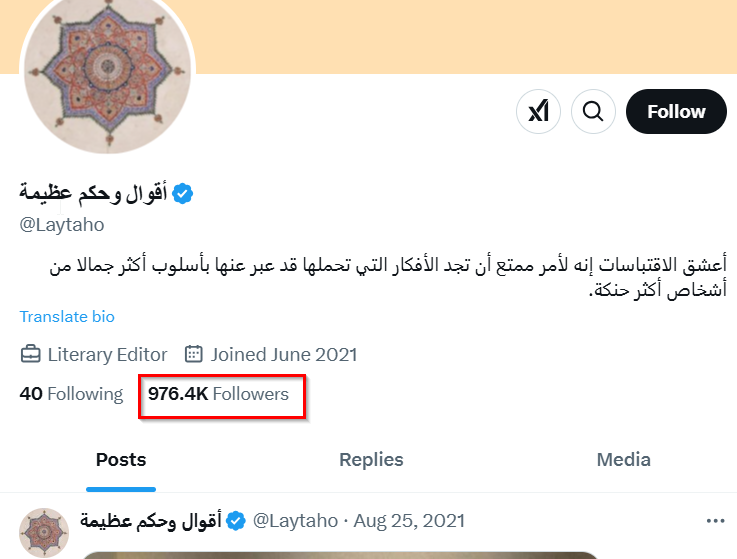
These accounts engaged in various forms of amplification, whether by incorporating the hashtag into their advertisements, reposting it, or interacting through replies on posts from Lebanese and non-Lebanese accounts supporting Hezbollah.
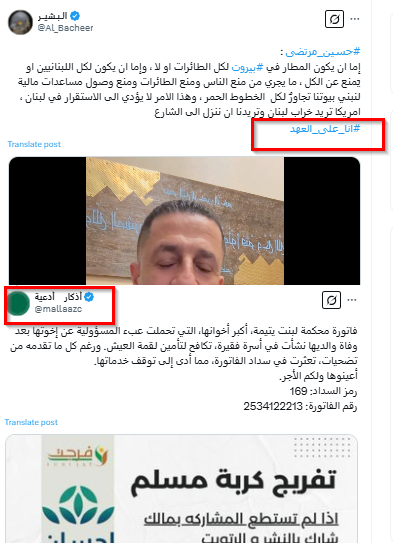
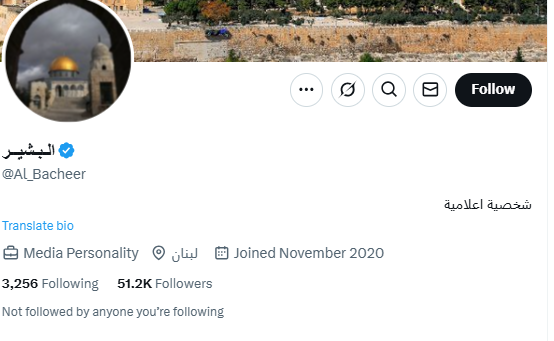
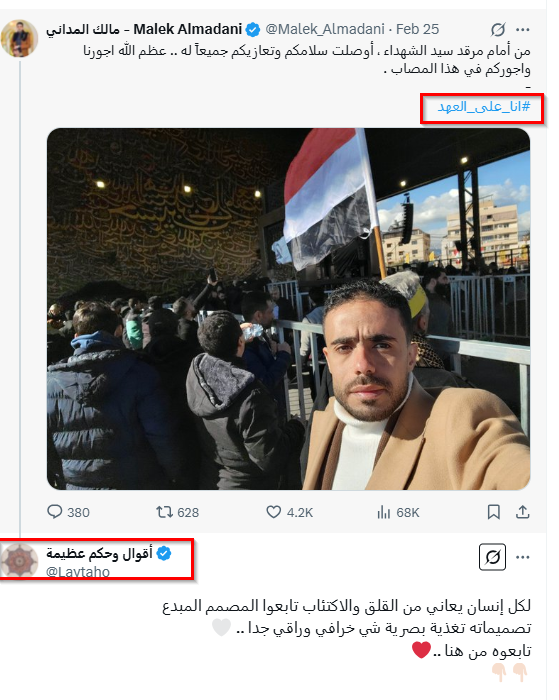
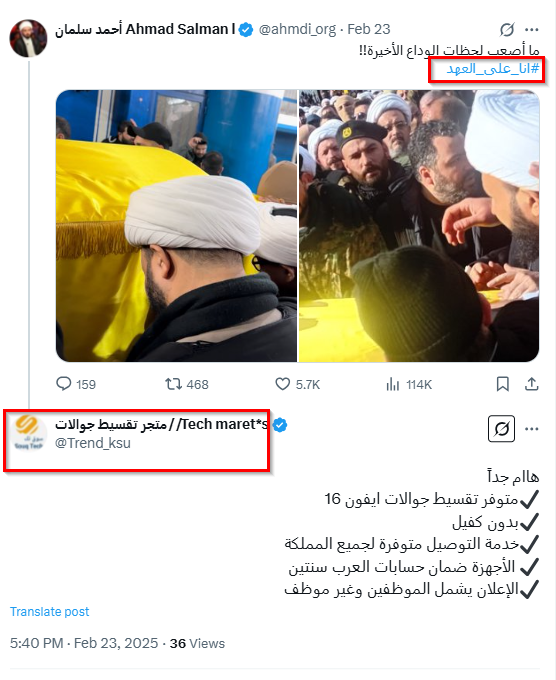
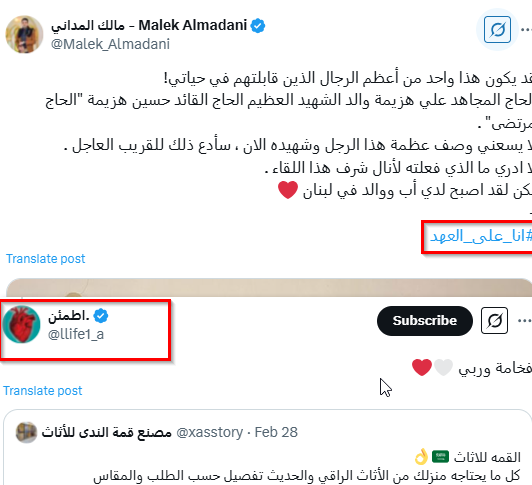
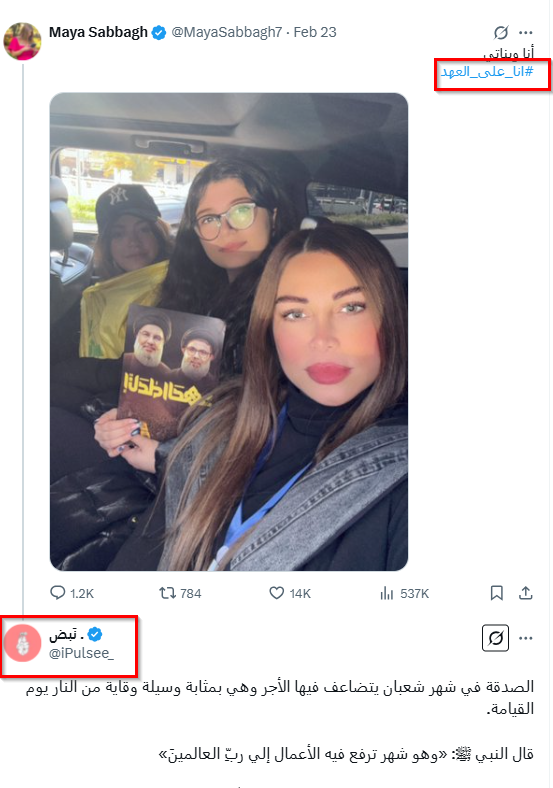
Amplification of the digital campaign was not limited to commercial accounts; it also involved accounts sharing explicit content. Among them was the account "Sajeeja," which posted a video featuring a Saudi woman known as "Najd Barbie," adding the hashtags #أنا_على_العهد (I Am Still Faithful) and #تشييع_الروح_23_شباط (Funeral of the Soul, 23 February) to the post. Later, the Najd Barbie account responded to its own post, further boosting its reach and expanding its audience.
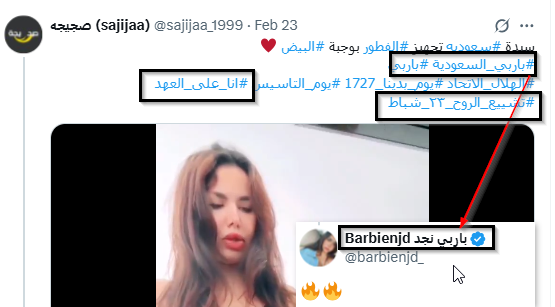
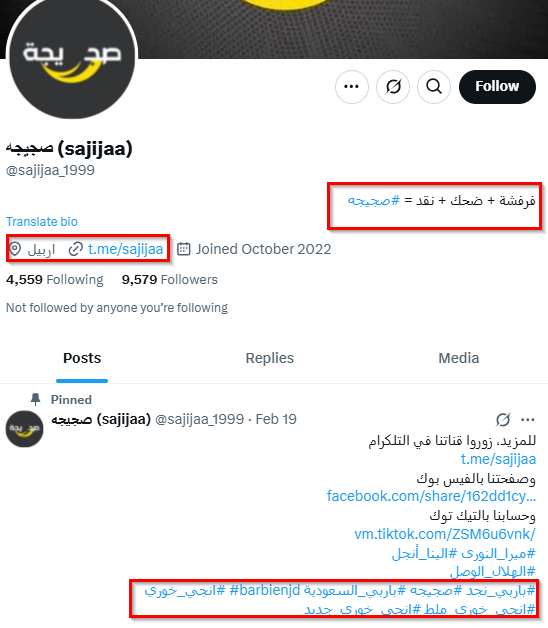
The second category of accounts involved in the digital campaign and amplifying the hashtag #أنا_على_العهد (I Am Still Faithful) were officially affiliated with Iran or Hezbollah. This included the account of Al Mayadeen TV, known for its allegiance to Hezbollah, and the "Iran in Arabic" account, which actively promoted and engaged with the hashtag throughout February, particularly during the funeral proceedings of Hassan Nasrallah.
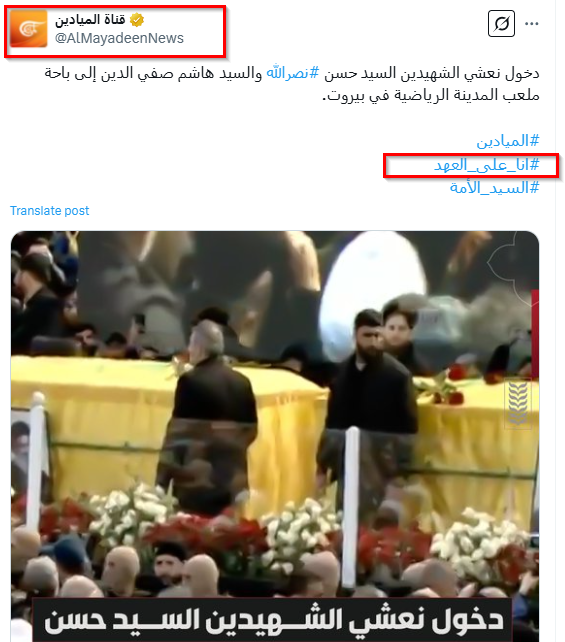
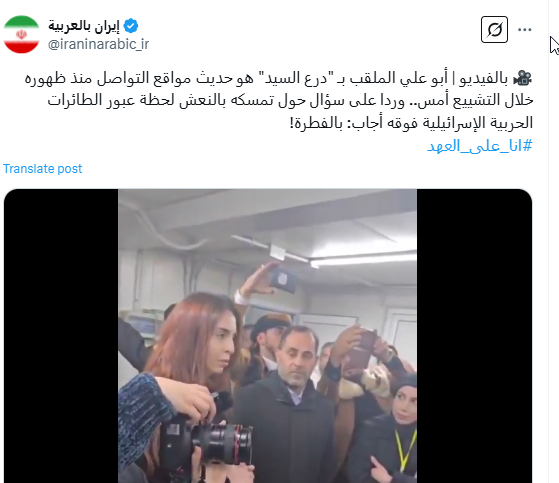
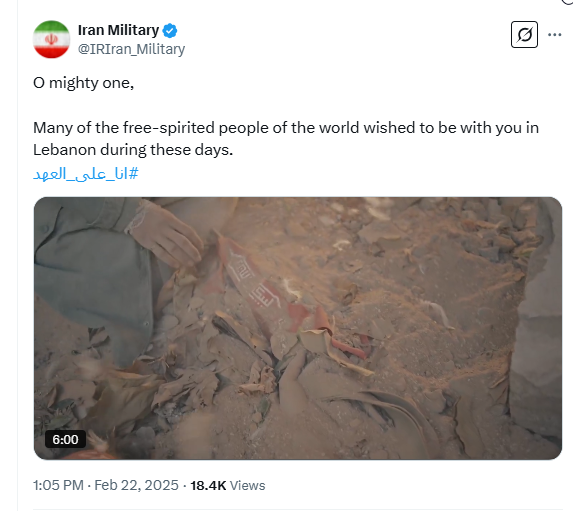
The third category included the most interactive accounts in the digital campaign—those with the largest number of followers. Among them was the account "Rawan Qabbas, a Yemeni Jew," owned by a woman named Rawan Qabbas. According to the account's bio, she is a researcher and a member of Neturei Karta, an anti-Zionist Jewish movement.
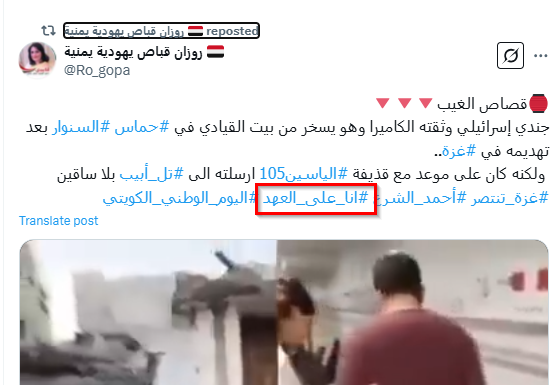
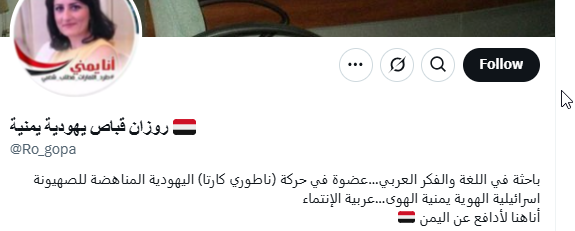
However, the most engaged account with the hashtag #أنا_على_العهد (I Am Still Faithful) had previously shared several misleading reports during and before the Gaza war. Multiple fact-checking agencies have examined its posts and confirmed its involvement in spreading disinformation.
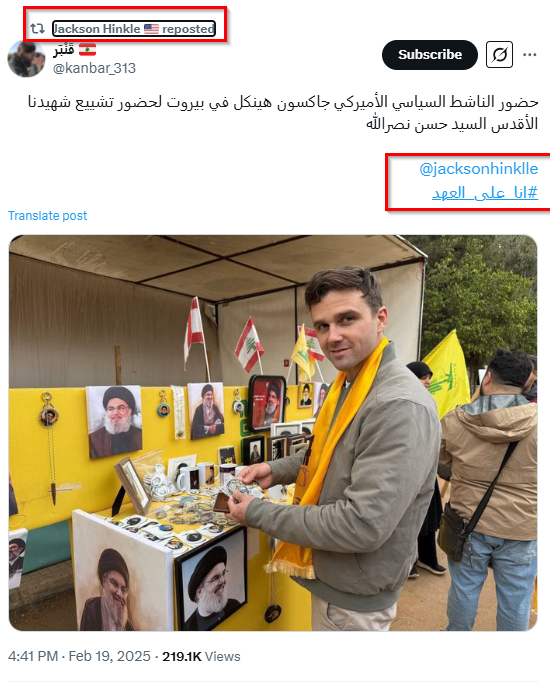
The account that dominated the digital campaign, boasting 2.8 million followers, belonged to American activist Jackson Hinkle. He attended the funeral in person and engaged with the hashtag #أنا_على_العهد (I Am Still Faithful) by commenting and resharing a post featuring his photo at the ceremony.
![]()
Hinkle's account has sparked suspicions due to his constant engagement during the Gaza war and his vocal opposition to the Biden administration. CNN even described him as a "Russian propaganda machine." To investigate further, we utilized BotSentinel, a tool developed by activists to analyze suspicious digital activity among U.S. accounts. However, the tool indicated that his account's activity appeared natural.

Using the Botometer X tool, designed to measure and analyze account performance relative to bot accounts, Hinkle's account scored 2.6. This suggests that the account falls under the category of "cyborg accounts" or "cyber entities." These are partially automated accounts on social media that can still be controlled by humans, exhibiting both natural human traits and mechanical behaviors. This aligns, at least partially, with a report from The New York Times, which concluded that Hinkle is a "merchant of anger." He engages in campaigns of outrage against the United States to increase his fame and profits from account subscriptions and audio stream views.
#Hassan_Zemeira (Mouthpiece) Disrupts the Shia Procession
The hashtags mourning Hezbollah members killed in the Israeli airstrike were not alone in the digital space. The hashtag #حسن_زميرة (Hassan the Mouthpiece) emerged as a strong contender, disrupting and competing with these hashtags in a noticeable way. While the total interactions linked to it were lower compared to #أنا_على_العهد (I Am Still Faithful), its impact was still evident in the digital landscape.
The total posts under this hashtag reached around 20,000 during February 2025, with a sudden surge in interactions peaking on February 23, coinciding with the funeral ceremonies for Hezbollah members killed in the Israeli airstrike.
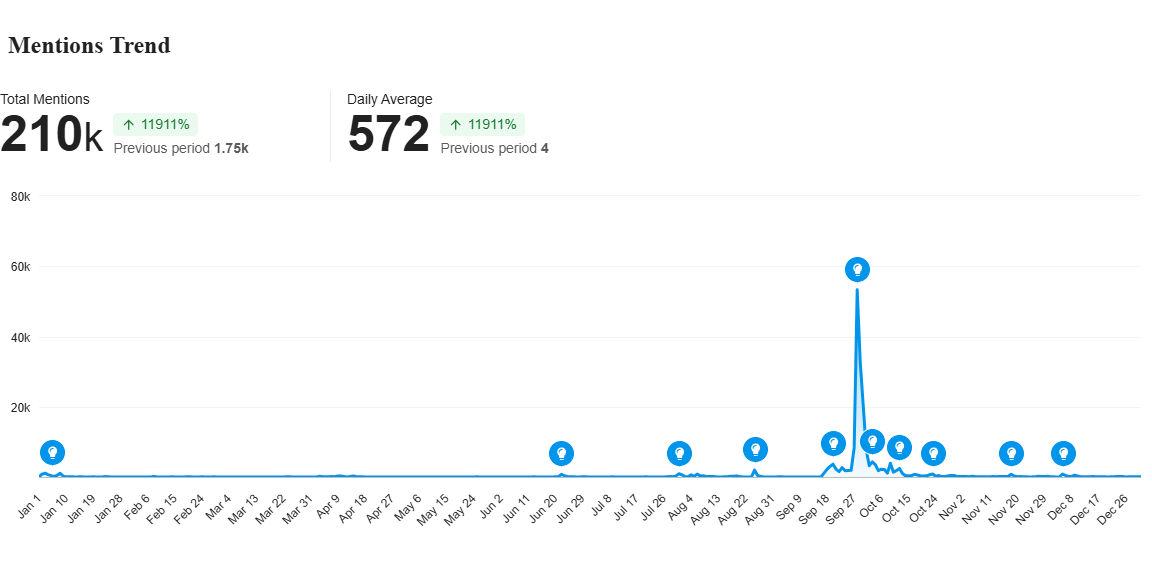
Unlike the hashtag #أنا_على_العهد (I Am Still Faithful), interactions with the hashtag #حسن_زميرة (Hassan the Mouthpiece) began early and continued throughout 2024, peaking on September 23, 2024, the day of the Israeli airstrike that led to the death of Hassan Nasrallah. However, what raises suspicion about the pattern of interactions with this hashtag is that its reach was notably high compared to actual interactions. The total reach amounted to approximately 48.5 million, with a daily average of around 1.87 million.
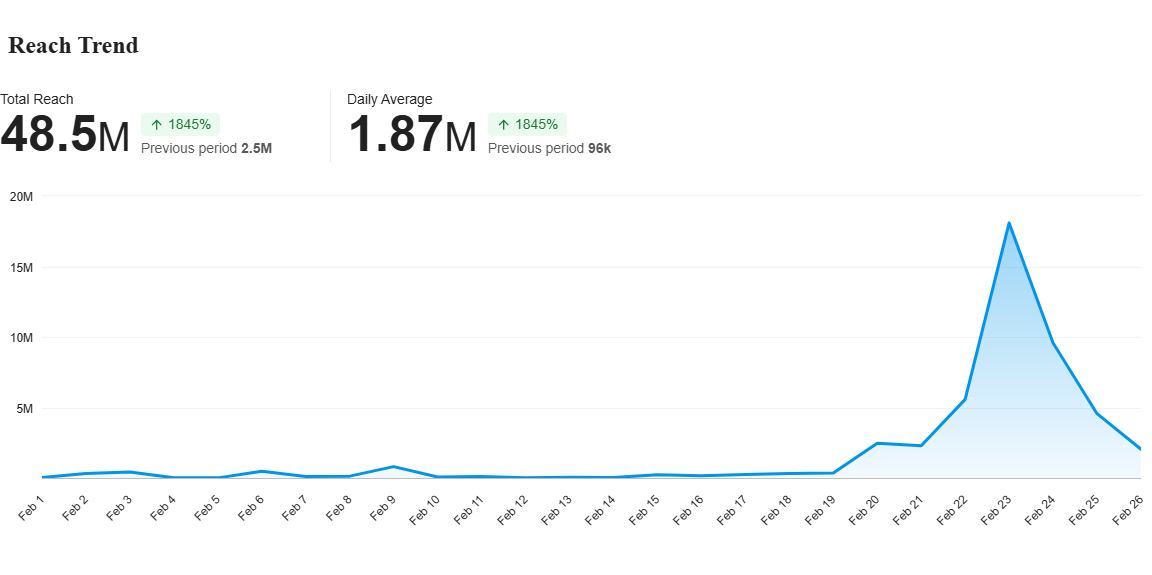
As evident from the hashtag’s title, the interactions associated with it focus on mocking Hassan Nasrallah's persona and highlighting the violations committed by Hezbollah when it intervened to fight in support of the Assad regime.
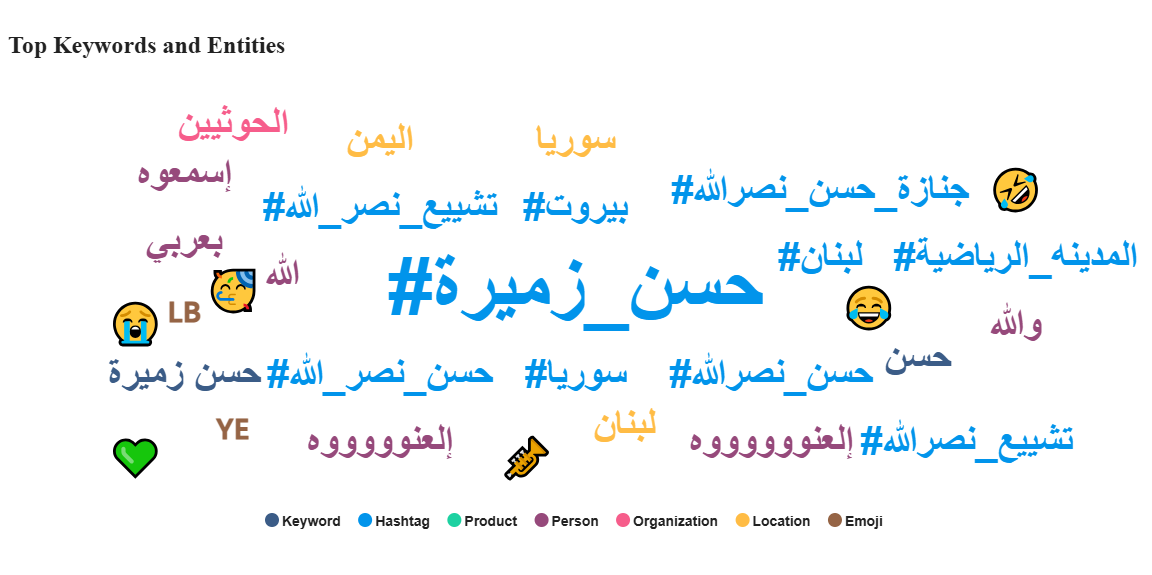
This is clearly reflected through the hashtags associated with #حسن_زميرة (Hassan the Mouthpiece), with prominent ones such as #حزبالله_الإرهابي (Hezbollah the Terrorists) and #حزب_اللات_الإرهابي (Terrorist Anti-Allah Party).
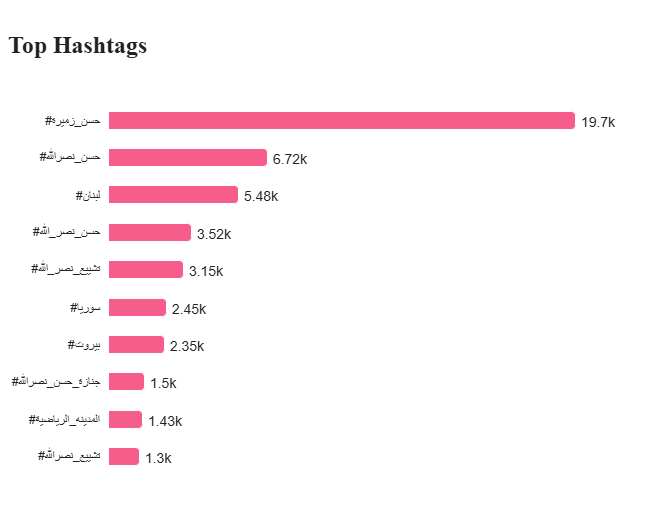
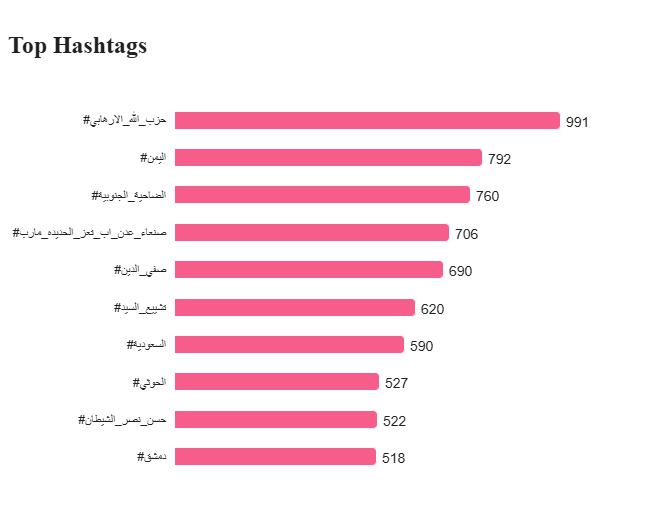
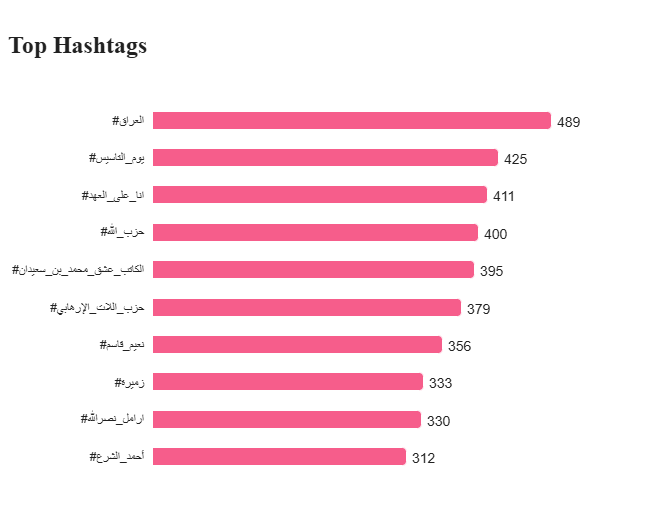
Despite the hashtag being linked to Hezbollah and, by extension, to Lebanon, Meltwater's analysis revealed that the largest number of interactions came from Saudi Arabia, followed by Syria, Yemen, the United States, Iraq, and Germany. Lebanon, however, ranked at the bottom with only 153 interactions in February 2025, compared to 1,880 interactions from Saudi Arabia during the same period.
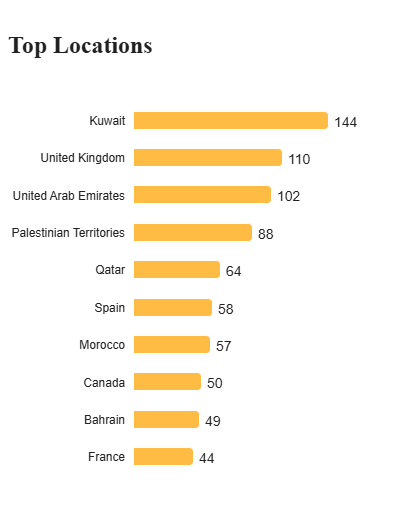
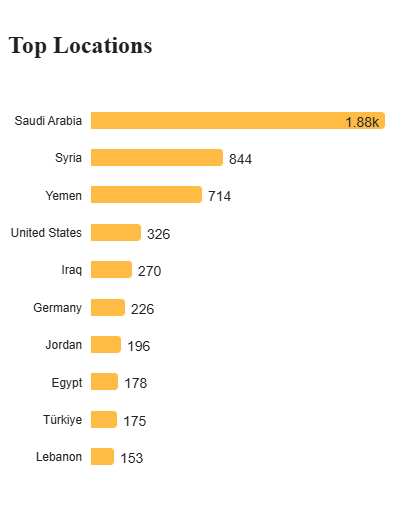
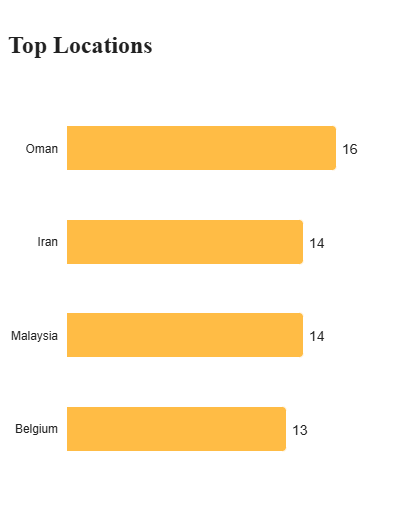
The interaction pattern in the #حسن_زميرة (Hassan the Mouthpiece) campaign was similar to that of the #أنا_على_العهد (I Am Still Faithful) campaign, with resharing and replies accounting for the majority of total interactions in both campaigns. This suggests intentional amplification of the online campaign, with content being pushed to achieve wide reach through intensive reposting rather than natural engagement through original posts.
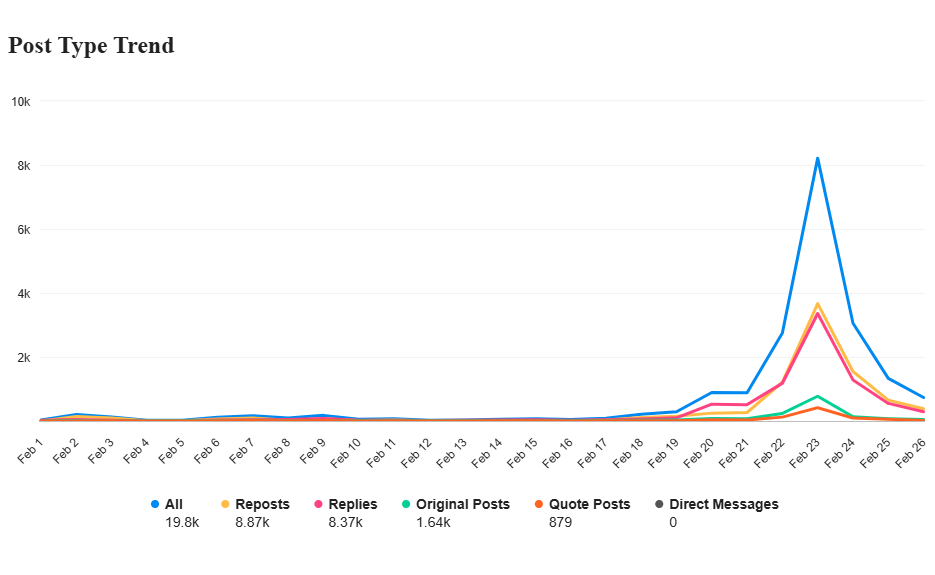
Resharing accounted for about 45% of the total interactions associated with the campaign during February 2025, while replies made up approximately 42%. Original content, however, represented only 8.3% of the total interactions.
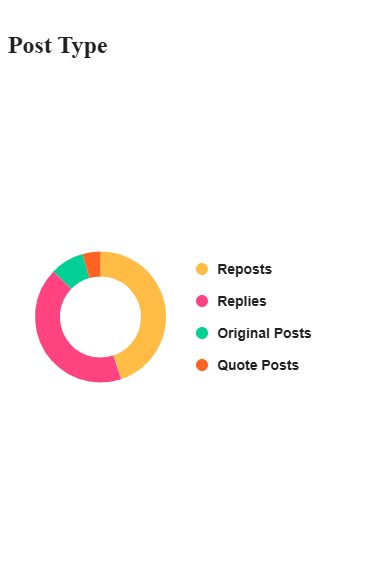
An analysis of accounts participating in the #حسن_زميرة (Hassan the Mouthpiece) hashtag revealed that the accounts driving the most interactions were primarily based in Saudi Arabia.
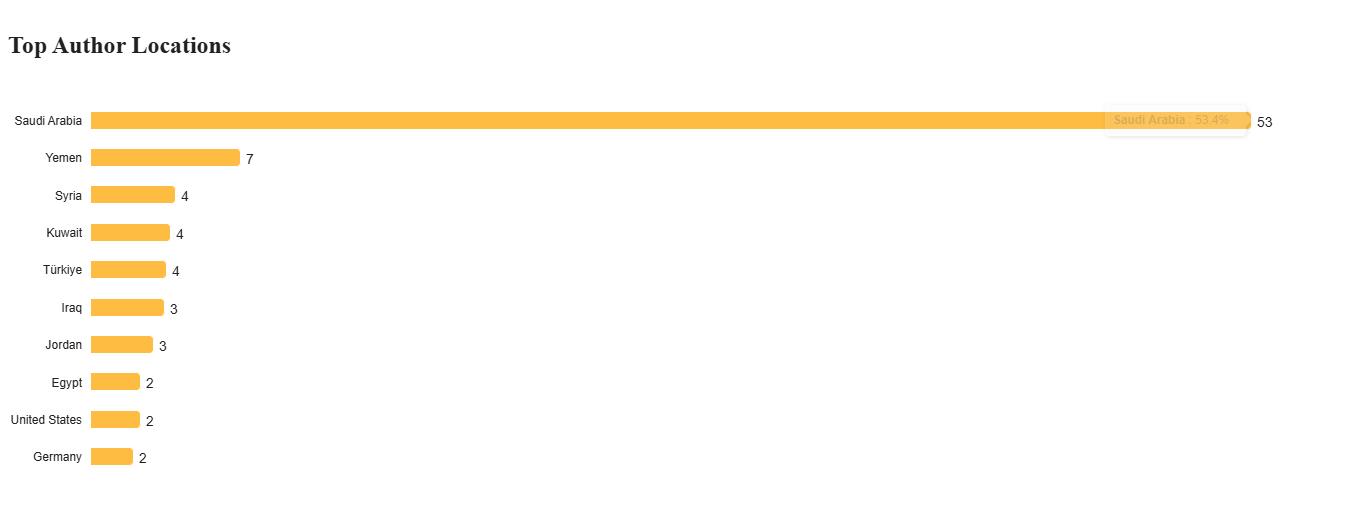
Saudi accounts led interactions with the #حسن_زميرة (Hassan the Mouthpiece) hashtag in February 2025, with 53 accounts participating, followed by Yemen with seven accounts.
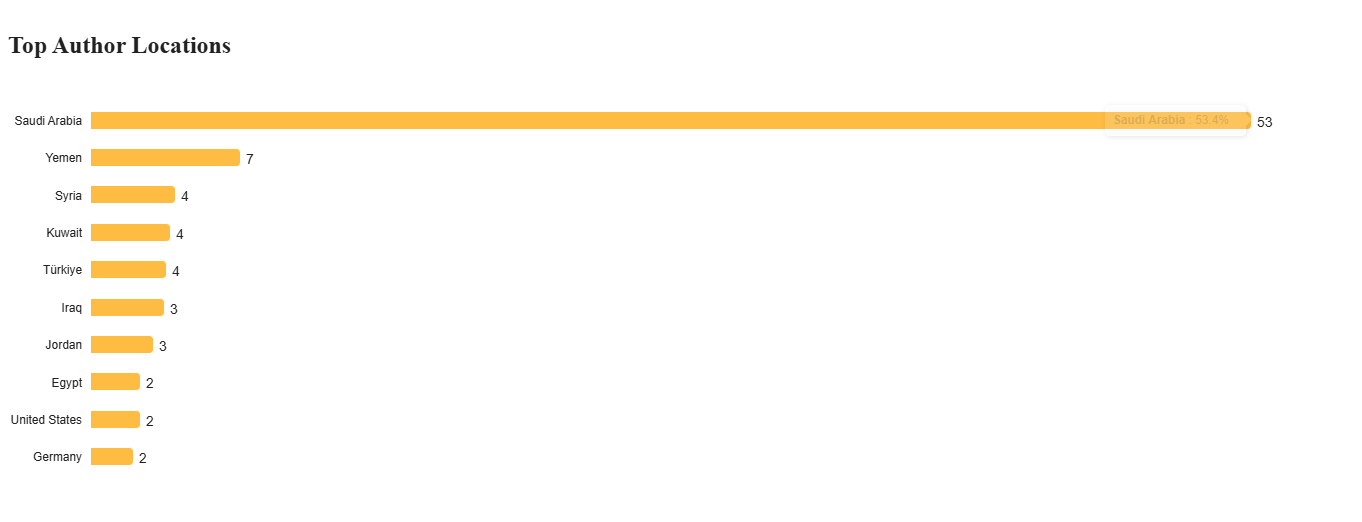
Lebanon ranked at the bottom of the list with only one account.
As for the account with most engagement with the hashtag, the analysis reveals they were not authentic.
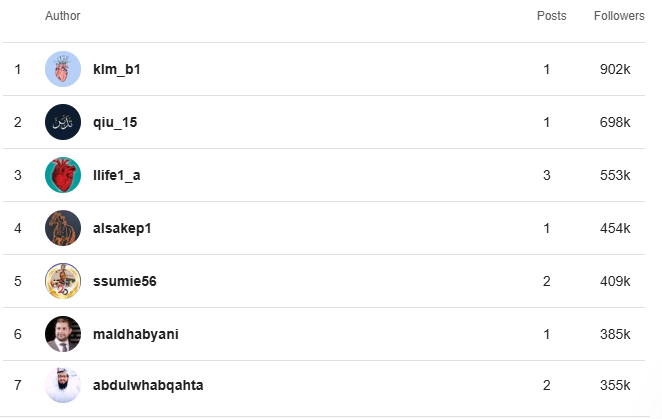
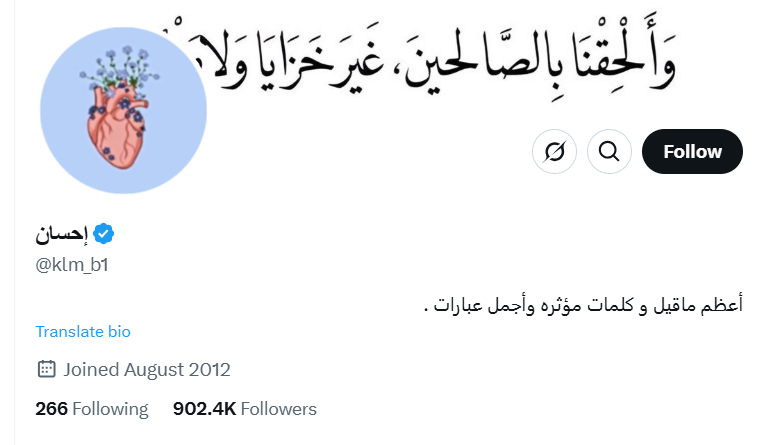
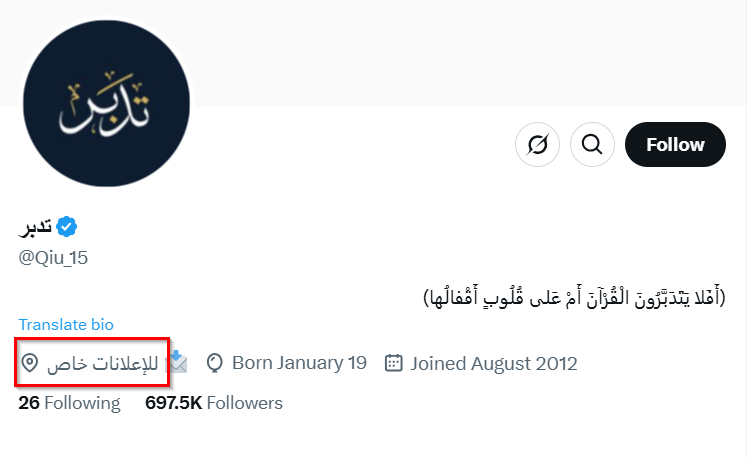
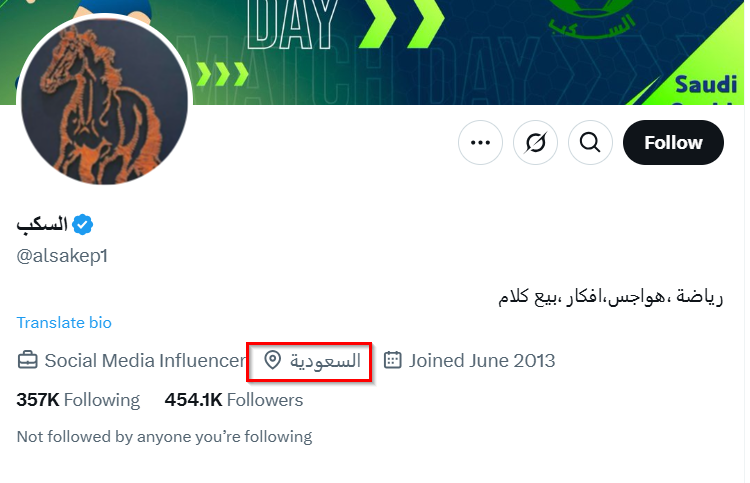
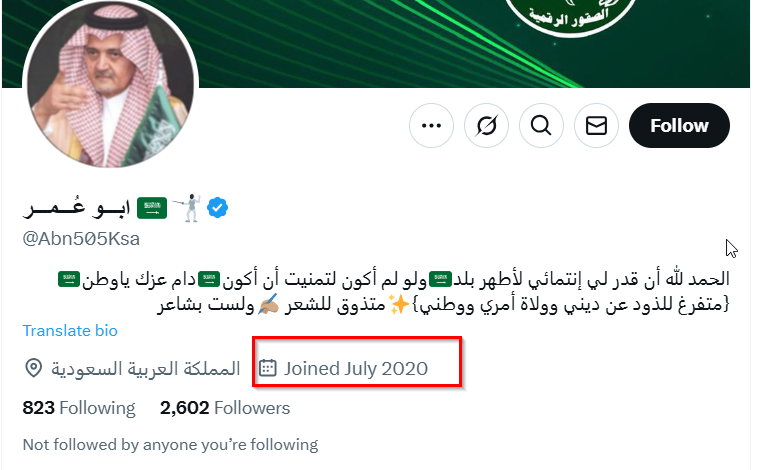
The campaign relied on commercial accounts to amplify engagement with the hashtag and boost its reach. Additionally, newly created Saudi accounts played a prominent role, focusing on promoting the Saudi government while discrediting any form of resistance.
For instance, the account 'Abu Omar' features tweets glorifying Saudi rulers alongside posts mocking and vilifying the Hamas resistance movement and Palestinian victims.
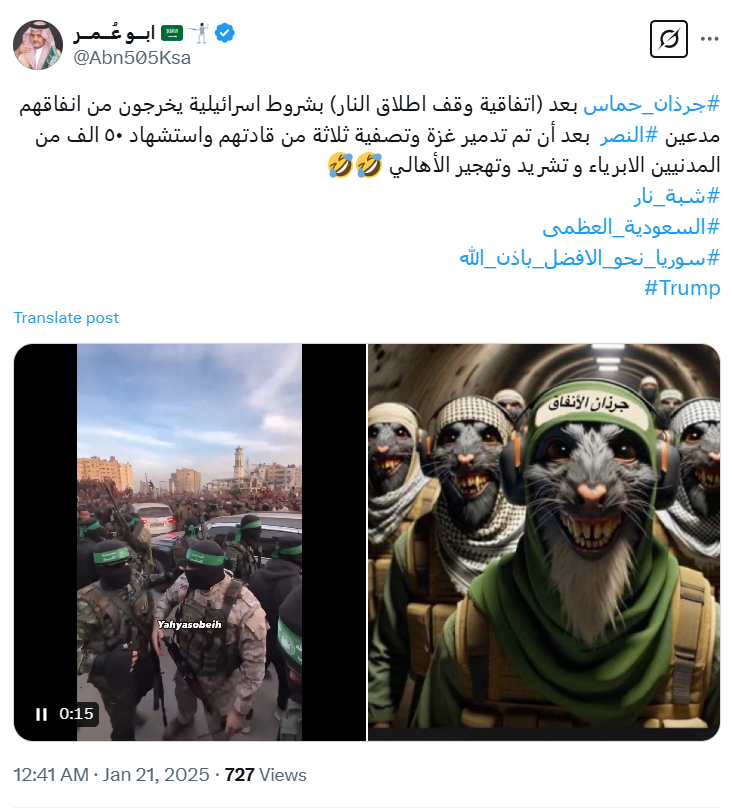
Mourning Amid the Buzz of Bots
To verify how the accounts involved in the campaign operated and how they amplified the hashtag #حسن_زميرة (Hassan the Mouthpiece), we analyzed interaction patterns with the most-followed accounts. The findings revealed that the engagement pattern of the commercial accounts we identified took two main forms.
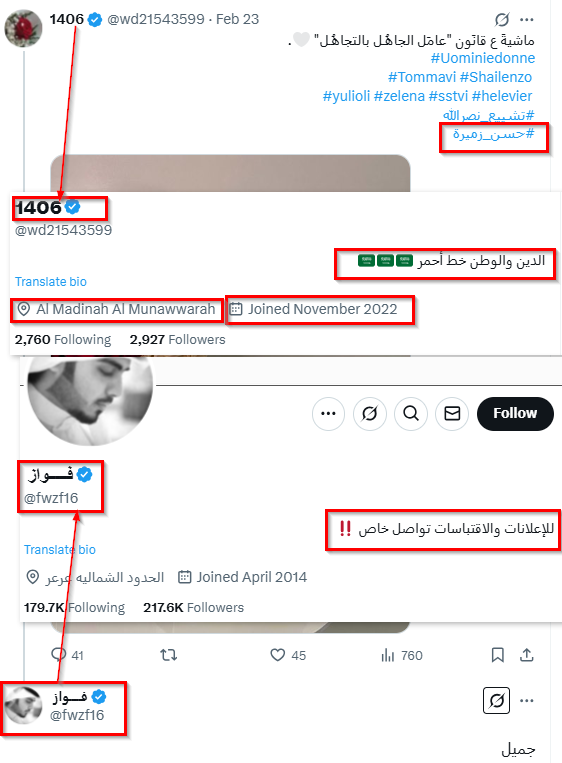
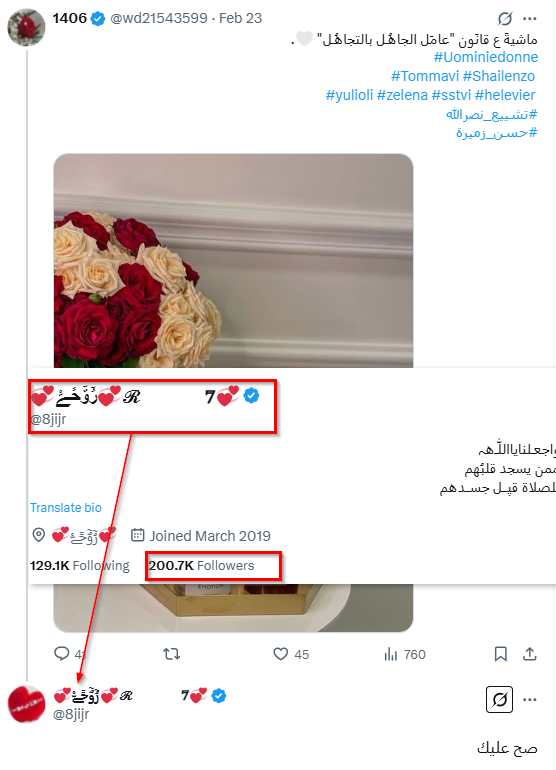
The first pattern involved commercial accounts operating from Saudi Arabia engaging with the hashtag. Subsequently, several other commercial accounts participated in amplifying and spreading the post by commenting on the original tweet containing the hashtag #حسن_زميرة (Hassan the Mouthpiece).
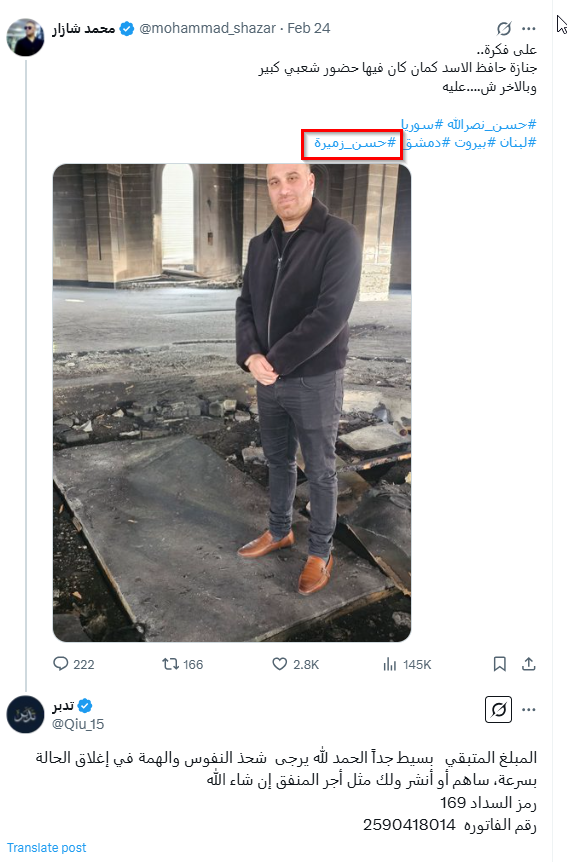
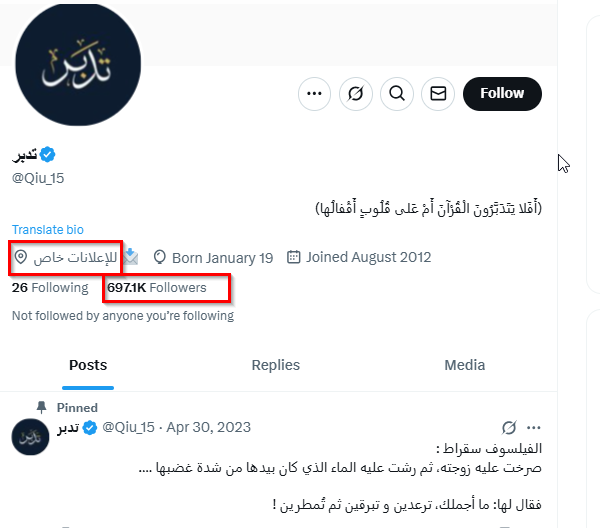
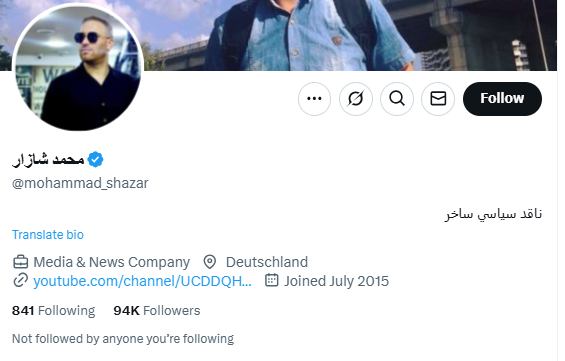
The most common pattern of interaction among commercial accounts involved engaging with posts from real individuals. These accounts actively commented on posts by Syrian, Yemeni, Iraqi, and Gulf-based users that included the hashtag # حسن_زميرة (Hassan the Mouthpiece). This strategy amplified the reach of these posts and increased overall engagement with the hashtag. Among these commercial accounts was the "اطمئن" (Rest Assured) account, which analysis revealed had also played a role in boosting the hashtag #أنا_على_العهد (I Am Still Faithful).
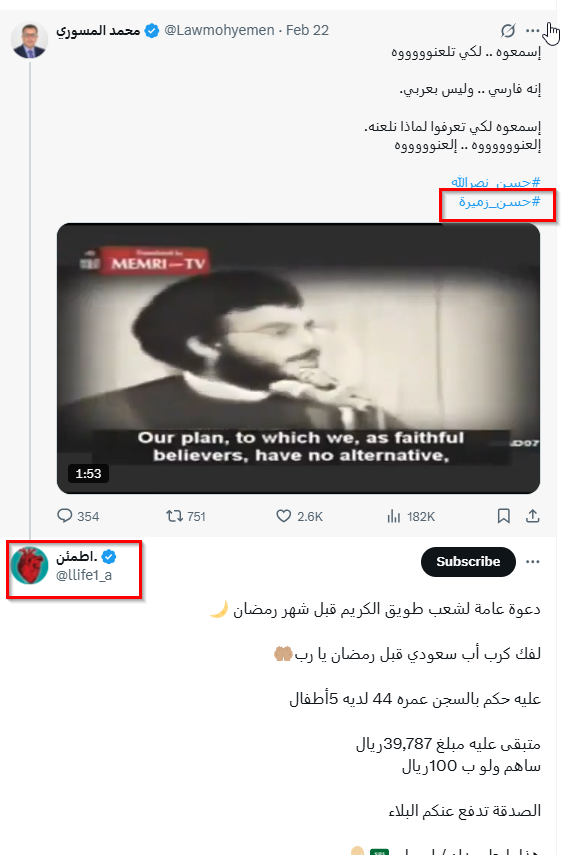
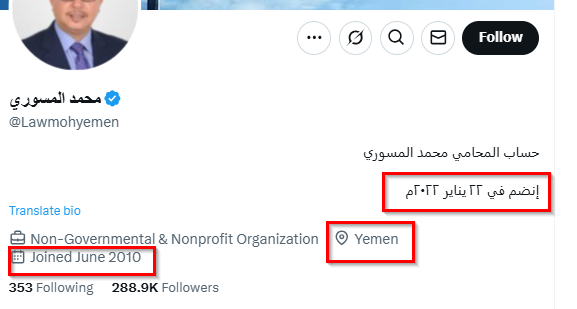
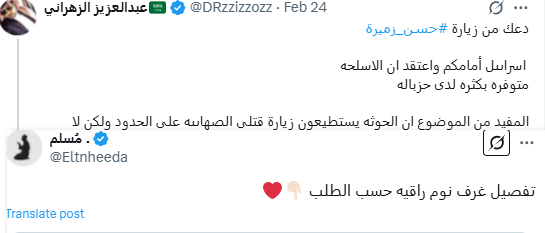
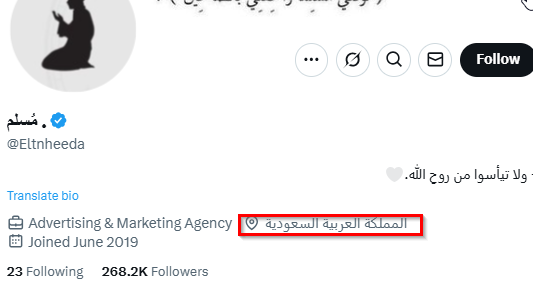
The other type of accounts involved in the campaign and engaging with the hashtag #حسن_زميرة (Hassan the Mouthpiece) were mostly Saudi accounts that fully aligned with and promoted the official stance of the Saudi government. These accounts actively spread messages and accusations aimed at discrediting resistance movements and anything related to them.
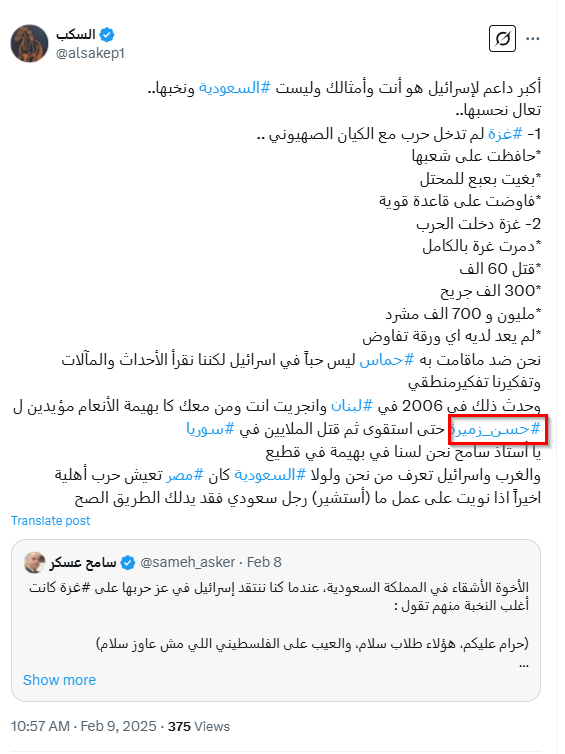
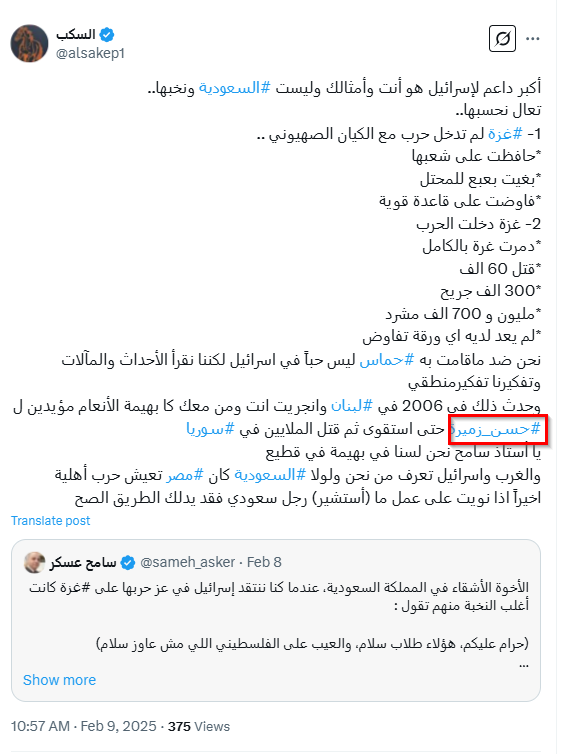
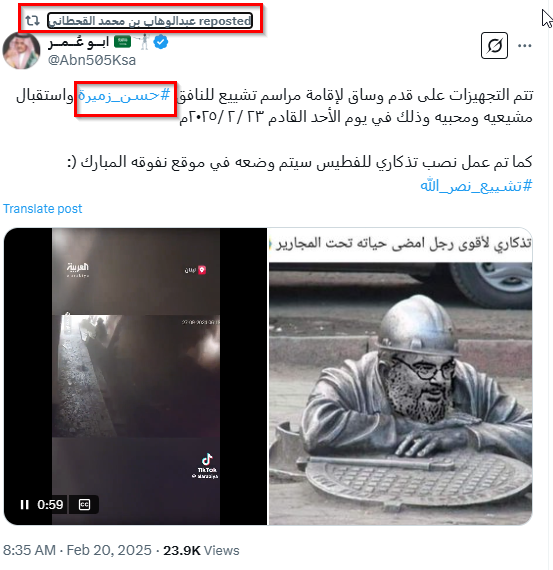
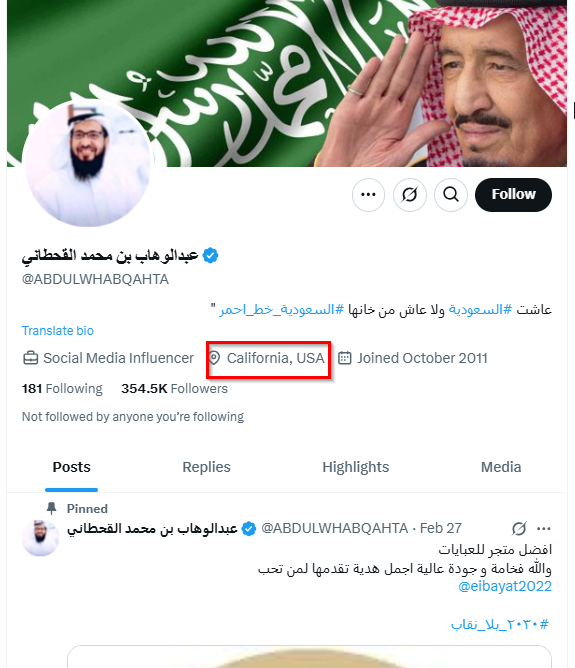
Participation in the #حسن_زميرة (Hassan the Mouthpiece) campaign was not limited to commercial accounts or those promoting the Saudi narrative. It also included Saudi journalists, researchers, and writers. Their role extended beyond engaging in a coordinated online campaign; they also amplified a fatwa issued by Kuwaiti cleric Othman Khamees, in which he described the Hamas resistance movement as a "deviant sect with misguided beliefs."
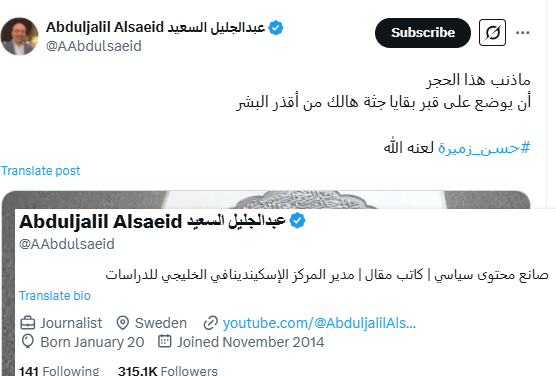
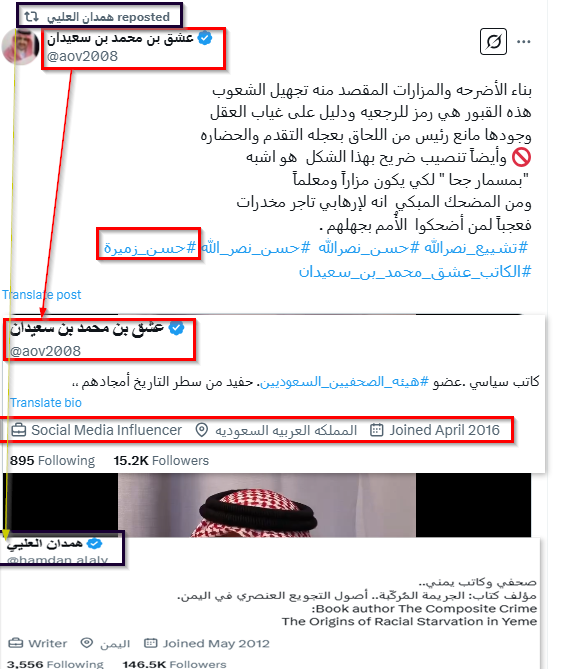
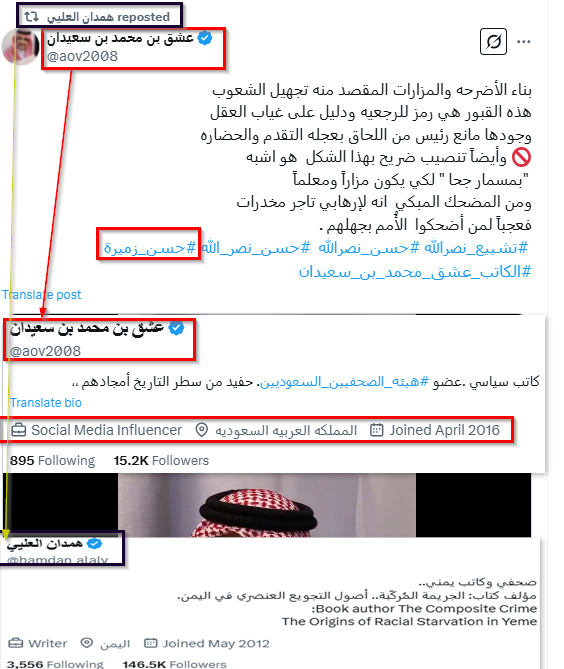
While the #أنا_على_العهد (I Am Still Faithful) campaign spread through influential activist accounts with millions of followers—such as Jackson Hinkle and Rawan Qabbas—alongside official accounts like Al Mayadeen and "Iran in Arabic," the #حسن_زميرة (Hassan the Mouthpiece) campaign primarily relied on Saudi accounts. These accounts did not only target Hassan Nasrallah and Hezbollah but also sought to tarnish the image of the Hamas resistance movement.
Despite their differing agendas, both hashtags shared a reliance on commercial accounts, some of which amplified both hashtags simultaneously. This pattern resembled the behavior of "digital swarms," which converge on any trending topic without a clear purpose.
